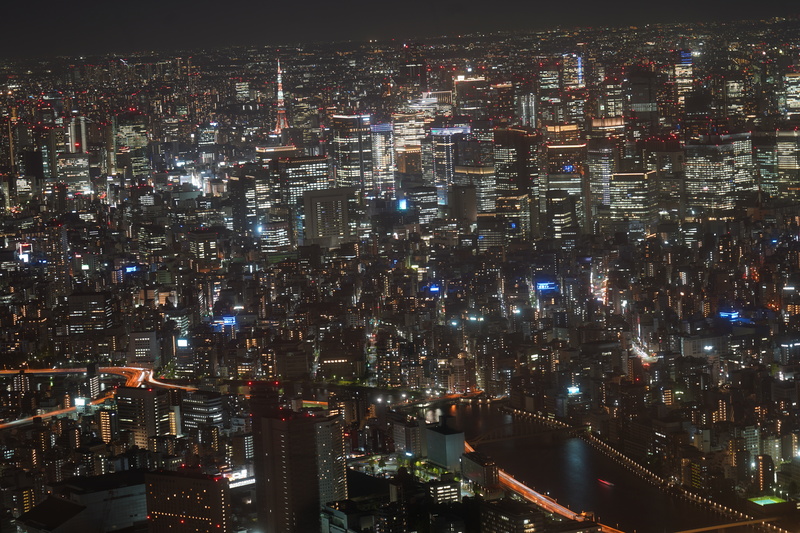長崎県は九州地方にある、日本で最もたくさんの島を有する県です。江戸時代には、鎖国によるキリシタン迫害、日本で唯一西洋人が訪れる事が許された人口の島、出島での貿易、明治時代には、海底の炭鉱発掘事業の為に軍艦島という人口の島が作られ、昭和時代まで町として繁栄、第二次世界大戦では原爆投下という凄惨な経験、という日本では他に類を見ない壮絶な歴史を持ちます。2024年10月、長崎市、五島市を訪れ、これらの歴史に触れる旅をしてきました。

目次
- Gunkanjima(Hashima)
- Nagasaki Peace Park
- Site of the Tang people’s residence
- Dejima
- Glover Garden
- Fukue island ( a part of Goto islands )
- Nagasaki city night view and Megane Bridge
- Nagasaki Specialty
軍艦島(端島)
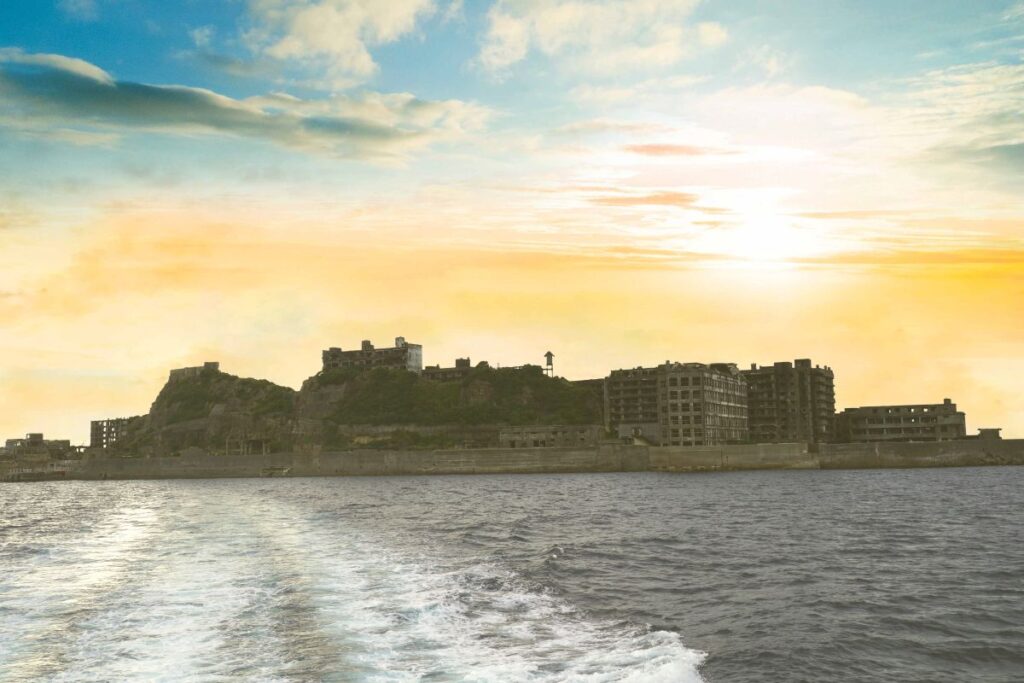
軍艦島(実際の名前は端島)は、明治時代に、海底に眠る石炭の採掘の為に作られた人口の島で、長崎港から南西へ18km程の所に位置します。軍艦島という名前は、島の形が、遠くから見ると戦艦 土佐に似ている事から名付けられました。1910年以前に作られた炭坑への入り口部分が、2015年にユネスコの世界文化遺産に登録されました。
島は、明治時代(1868年-)から昭和時代(1970年代まで)にかけて繁栄し、1960年代には日本初の鉄筋コンクリート高層アパートメントが建設され、5500人が0.06平方キロメートルの面積に住み、当時の東京の都市部よりも人口密度が高かったと言われています。しかし、1970年代、石油エネルギーの台頭により、次第に石炭の需要は減っていき、1974年に全ての住人が島を去った後、島は完全にクローズされました。
現在は、観光クルーズを行っている各会社のツアーに参加することで、島周辺のクルーズ、上陸も可能になっています。但し、上陸するには、波高 0.5 m以下・風速 5m以下・視程 500 m以上である必要があり、船が出航できても上陸できないケースもあるようです。上陸率は70~80%と言われています。私達は、軍艦島クルーズという所のツアーに参加し(大人3500円、所要時間120分、JR長崎駅より徒歩10分)、幸い上陸する事ができました。
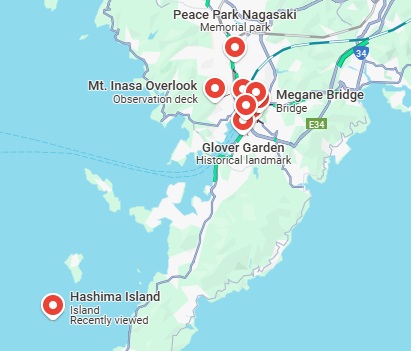
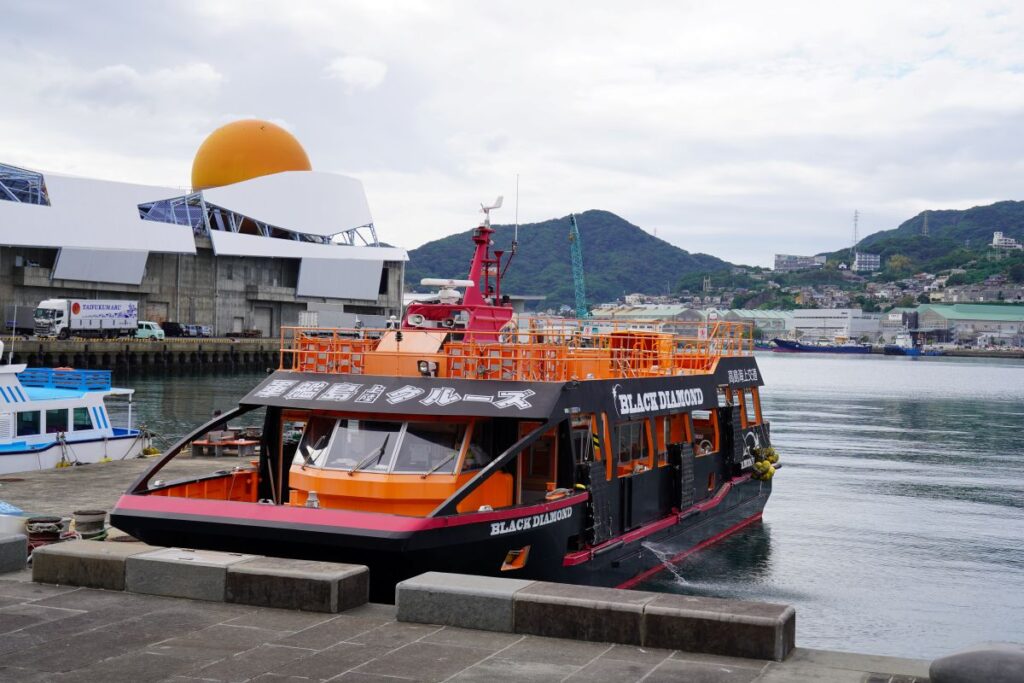
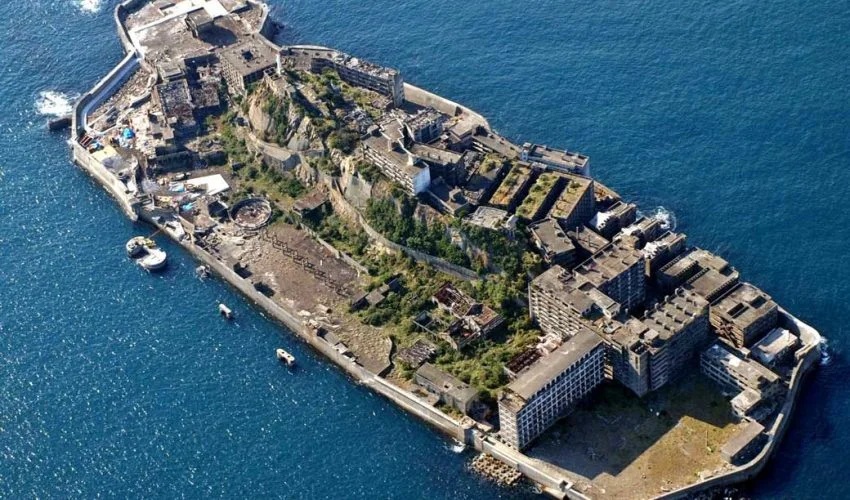
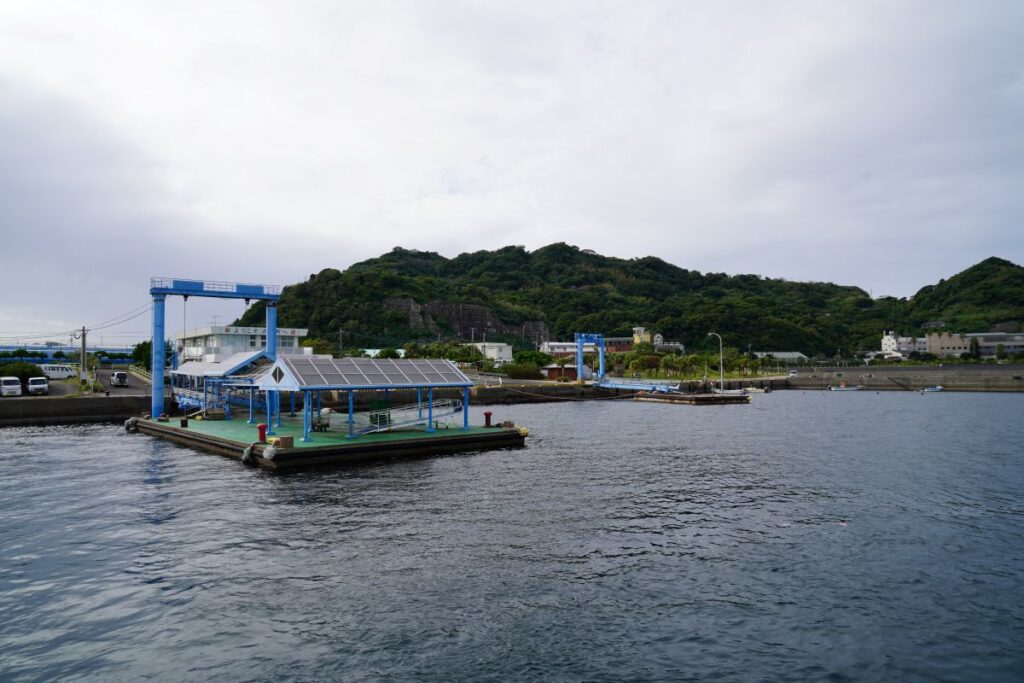
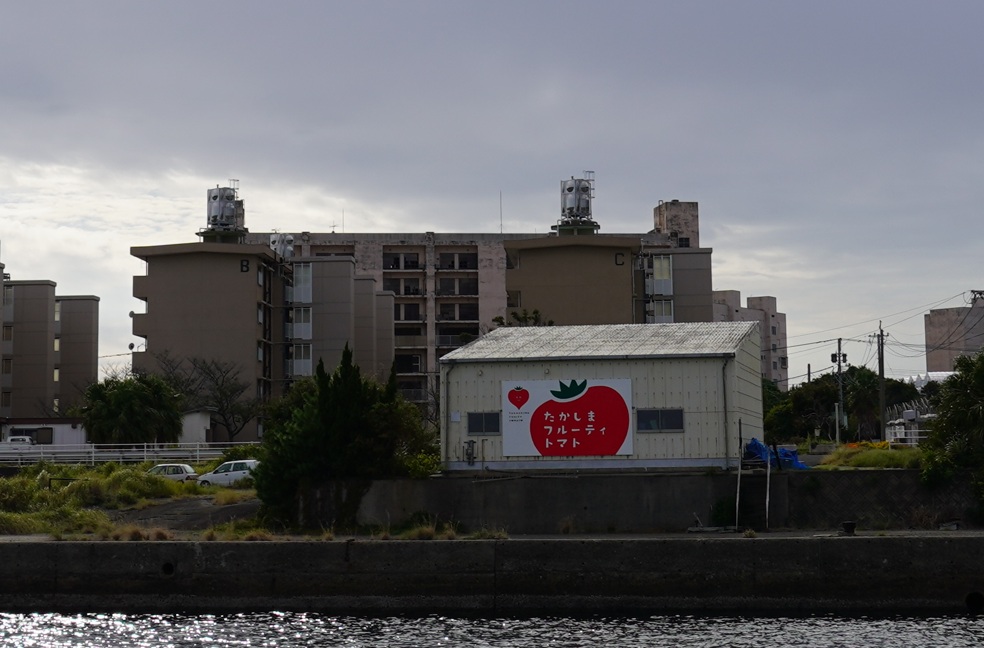
乗船から40分後、最初に高島という1.34平方キロメートルの島に寄ります。この島も、かつて石炭採掘産業が盛んでした。軍艦島にはお手洗いが無い為、お手洗いもこちらで済ませるよう、ガイドに促されます。ガイドがこの島にある軍艦島博物館に私達を連れて行き、軍艦島の歴史や構造について説明してくれました。
このツアーでは訪れませんでしたが、高島にある北渓井坑跡 は高島炭坑として2015年に世界遺産に登録されています。トーマス・ブレイク・グラバー(1838-1911)は、長崎市内にあるグラバー園が彼の邸宅として有名ですが、グラバー商会が破産した後、日本政府(明治政府)の任命で高島炭鉱を管理する為、高島にも住んでいました。その炭鉱は1986年に閉鎖されましたが、今も約250人(2025年8月現在)が高島に住んでおり、高島トマトのハウス栽培が盛んです。海がきれいで、砂浜からごく近い場所に珊瑚礁もある為、観光誘致活動もしているようです。
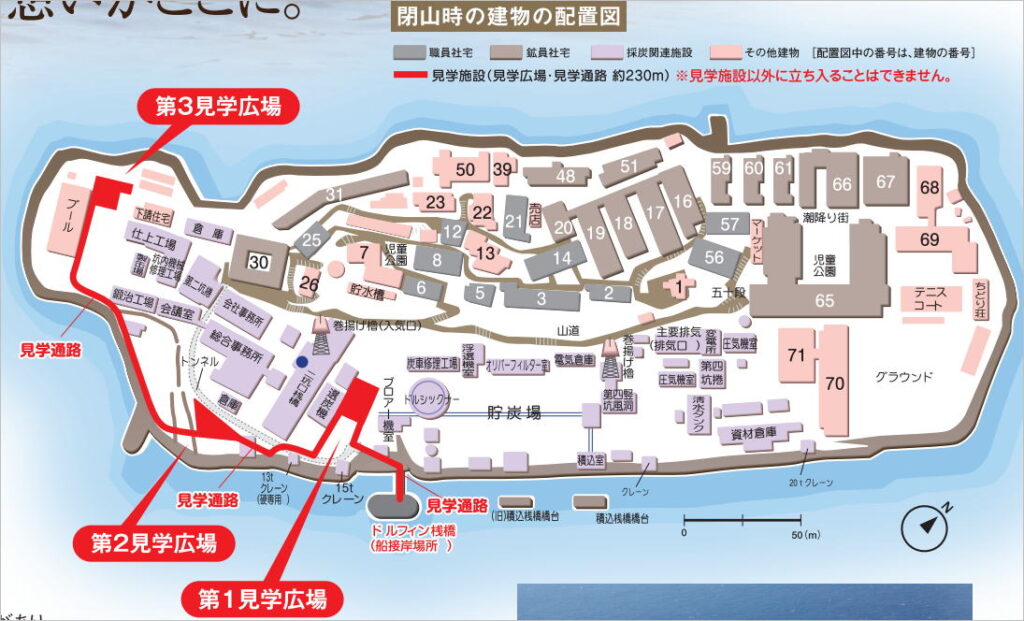
高島を出航して10分程で、軍艦島付近に到着です。船は島の周りをゆっくり1周し、ガイドの説明を聞きながら、写真やビデオを撮りました。続いて、船をドルフィン桟橋に接岸し、上陸です。桟橋から見学広場への道は、少し足元に気を付けて歩く必要がありました。見学可能な場所は、上記のパンフレットにある案内図にある通り、第1~3見学広場のみとなります。
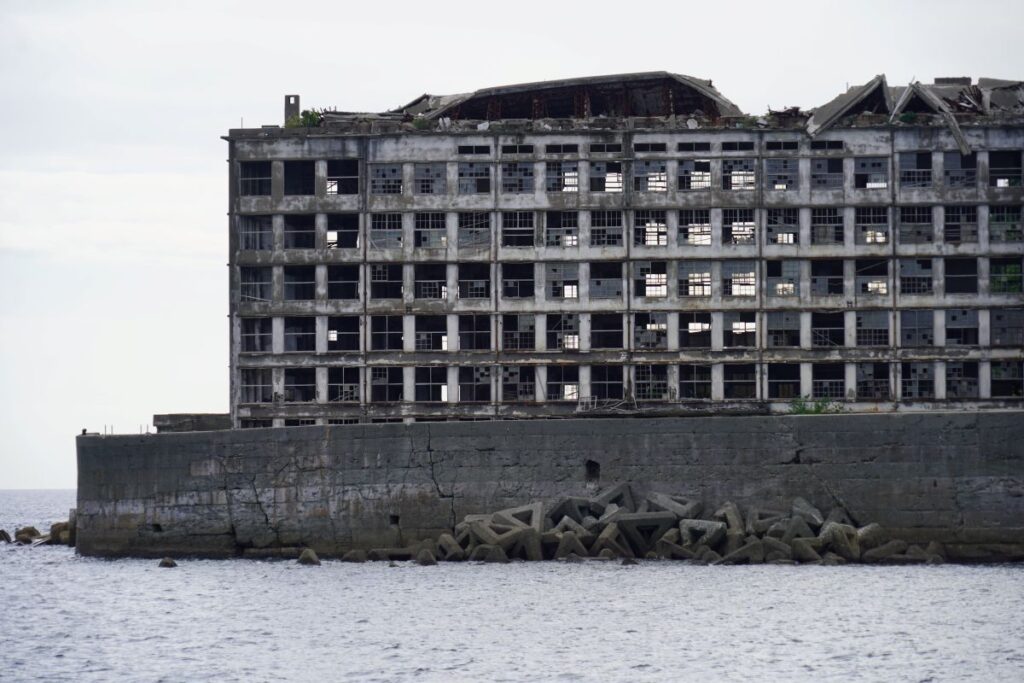
小学校だった建物です
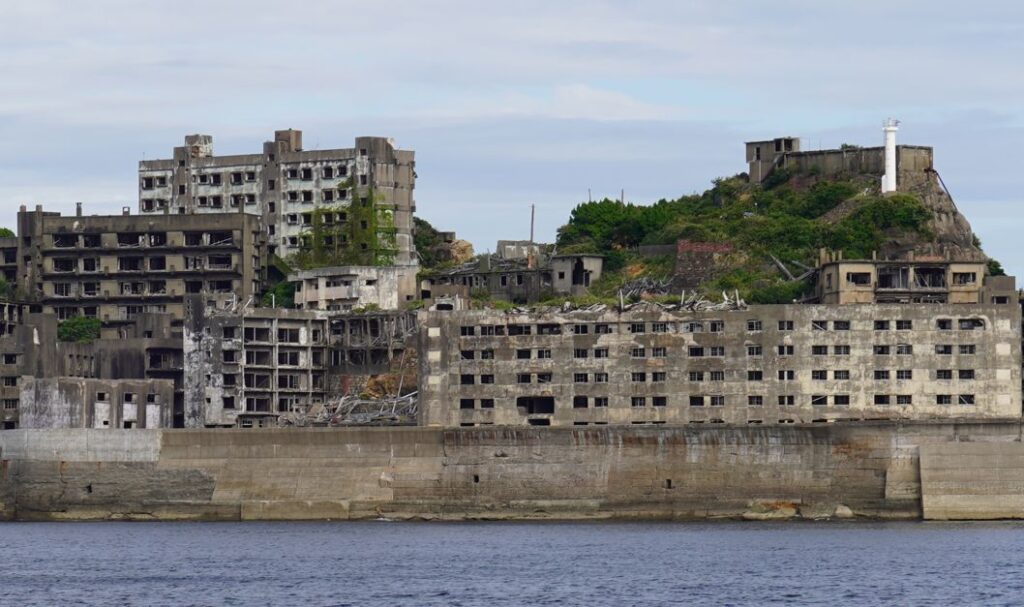
鉱員の社宅だった建物。白の灯台は、軍艦島が閉鎖された後、航行の妨げにならないように建設されました。
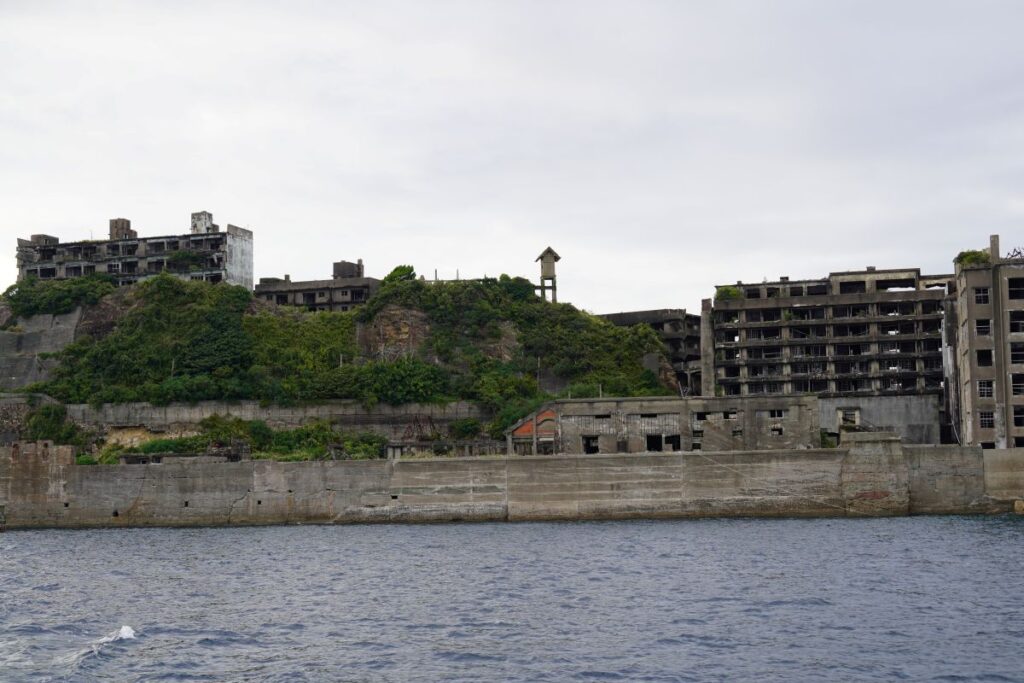
中央にある祠は、端島神社です。毎年春に、お祭りが行われていました。
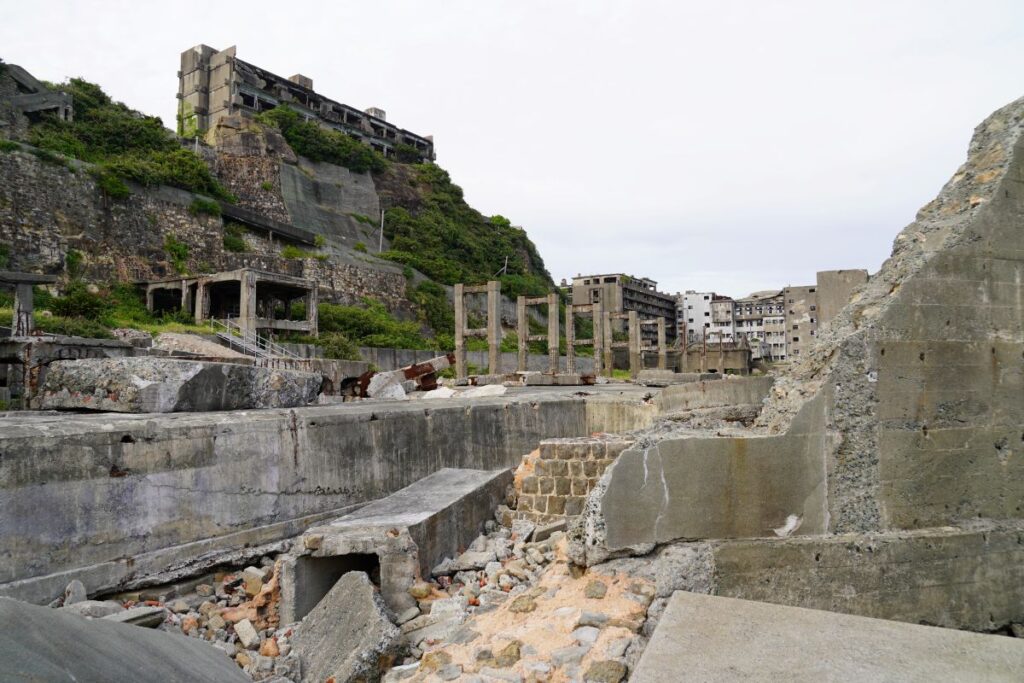
第1見学広場から第二見学広場へ向かう途中で見える光景です。中央にベルトコンベアーとして利用されていた支柱があります。
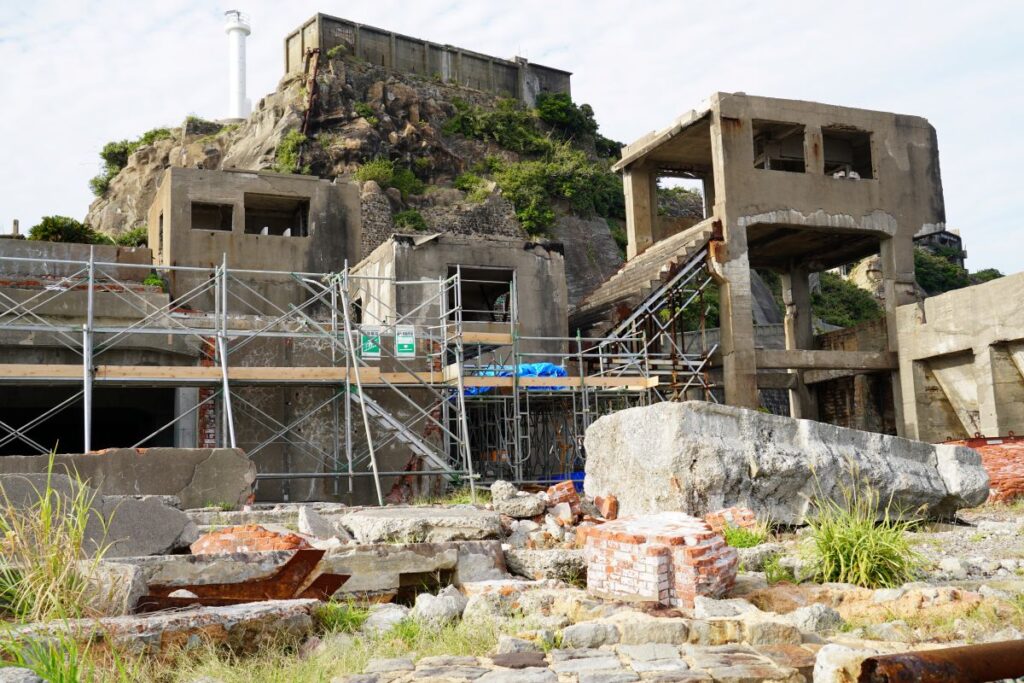
第2見学広場から見える光景です。右側の建物から延びている階段は、第二シャフト地下炭坑への入り口で、命の階段と呼ばれていました。炭坑内は非常に暑く、おにぎり等のお弁当を持参しても、食べる頃には腐ってしまう程で、炭坑内での作業は命の危険を伴うものでした。実際、多くの炭鉱労働者が命を落としたそうです。その為、鉱員達がここを歩く時は、戻ってこれない可能性を憂い、「命の階段」と呼んでいました。
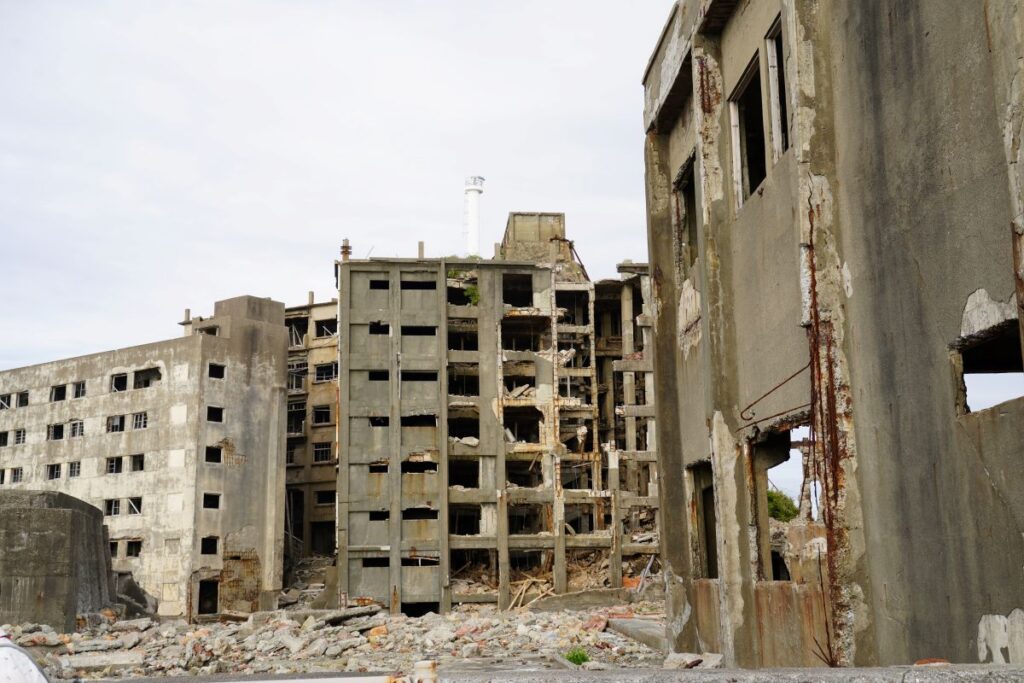
第3見学広場から見える光景です。右手の建物は工場、真ん中の建物は下請住宅となっています。
2025年現在、世界遺産に登録されて10年経つ軍艦島ですが、写真でもわかるように、廃墟の為、建物は老朽化し、崩れかけている物も多く、今後、どのようにこれらを維持・保存していくかが課題となっています。大浦天主堂の近くにある、軍艦島の立ち入り禁止区域の様子を巨大スクリーンやプロジェクションマッピング等で体感できる軍艦島デジタルミュージアム や、 SAVE GUNKANJIMA (軍艦島保全プロジェクト)が、収益の一部を軍艦島の維持・保存に充てる支援を行っているようです。
長崎平和公園
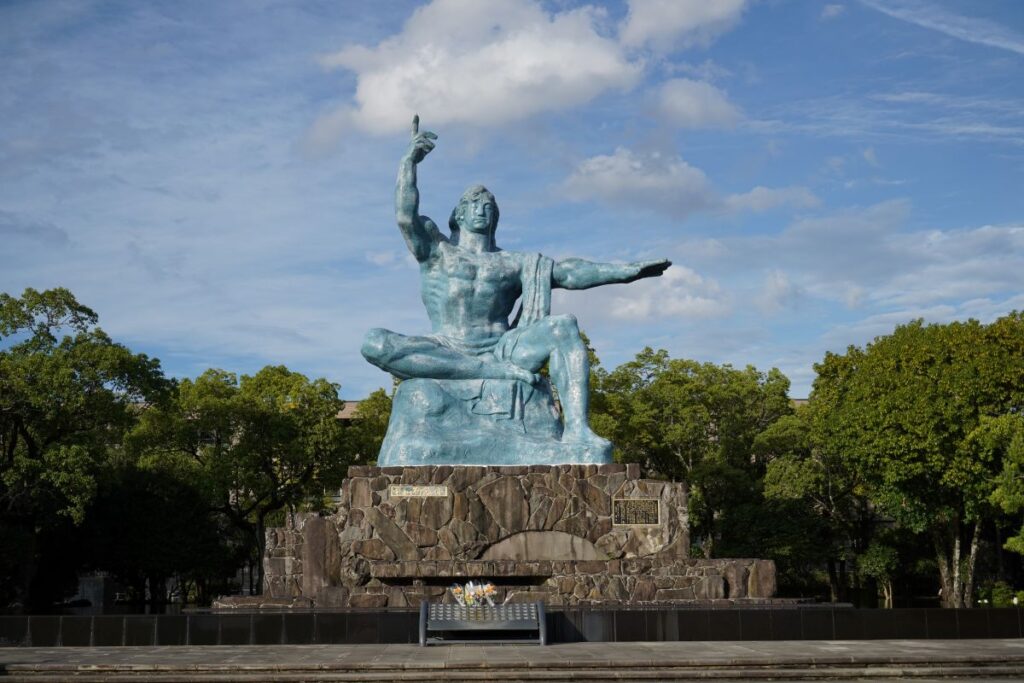
長崎は、1945年8月6日の広島に続いて、8月9日に原爆が投下された世界で二番目の都市です。原爆投下地点から1km以内の人々の88%が死亡し、約74,000人が犠牲になりました。長崎平和公園は、1950年に、原爆ドームの近くで世界平和を願って創設されました。この公園には、願いのゾーン、祈りのゾーン、学びのゾーンの3つのゾーンがあります。JR長崎駅前から路面電車(1号線・3号線)に乗り、15分後に平和公園駅で下車、公園の入口まで徒歩3分です。又は、JR長崎駅前バス停から1番バスで8分後、平和公園駅で下車、公園の入口まで徒歩5分です。
願いのゾーン
ブロンズの平和記念像は、長崎原爆投下の10年後の1955年、長崎出身の彫刻家、北村西望によって完成されました。右手は上空から落とされる核兵器の脅威を指し示し、真っすぐ伸びた左腕は平和を象徴しています。毎年8月9日の長崎原爆の日には、ここで式典が行われ、2024年には最多の100か国の大使らが出席しました。
下の写真は、平和の噴水です。平和の象徴である鳩と鶴の羽をイメージしたデザインとなっています。石碑には、原爆で被爆した少女が、喉が非常に乾いて油が浮いている水でも飲むしかなかった、というようなメッセージが刻まれています。
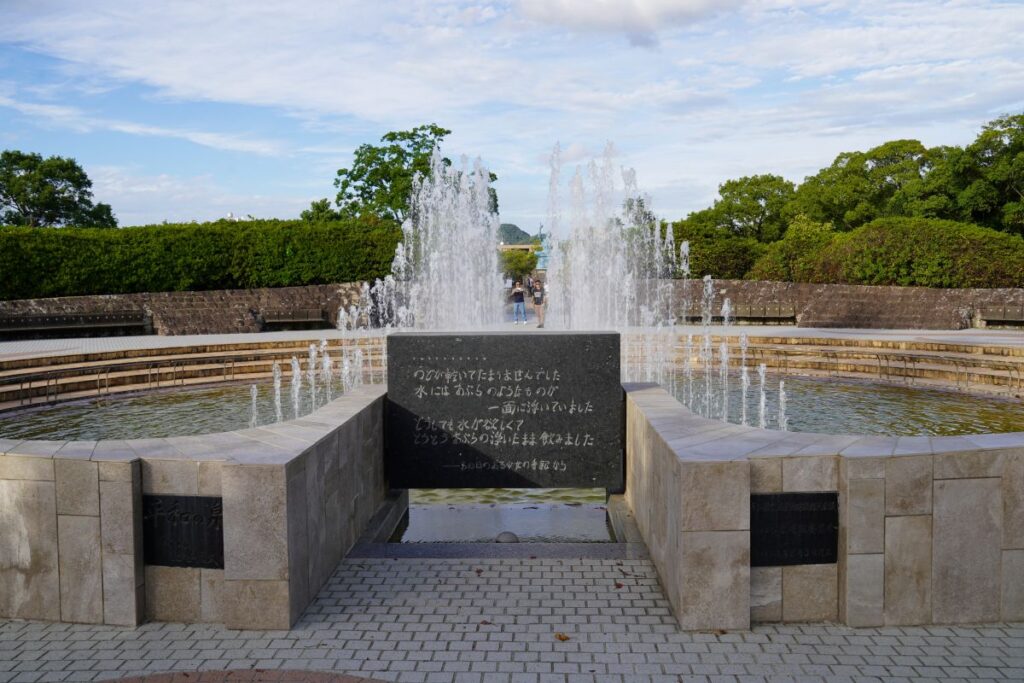
祈りのゾーン
祈りのゾーンには、原爆投下地点の記念碑があります。原爆は地上約500メートルの上空で爆発し、ここに落下しました。3000度の熱が全てを焼き尽くし、灰にしました。原爆殉難者名奉安箱には、原爆で爆死した人、被爆者でその後亡くなった人の氏名が奉安されています。
また、原爆当時の地層をガラス越しに展示しており、原爆投下によって壊された家々のタイルやレンガの層、そして熱で溶けたガラスが今も残っています。
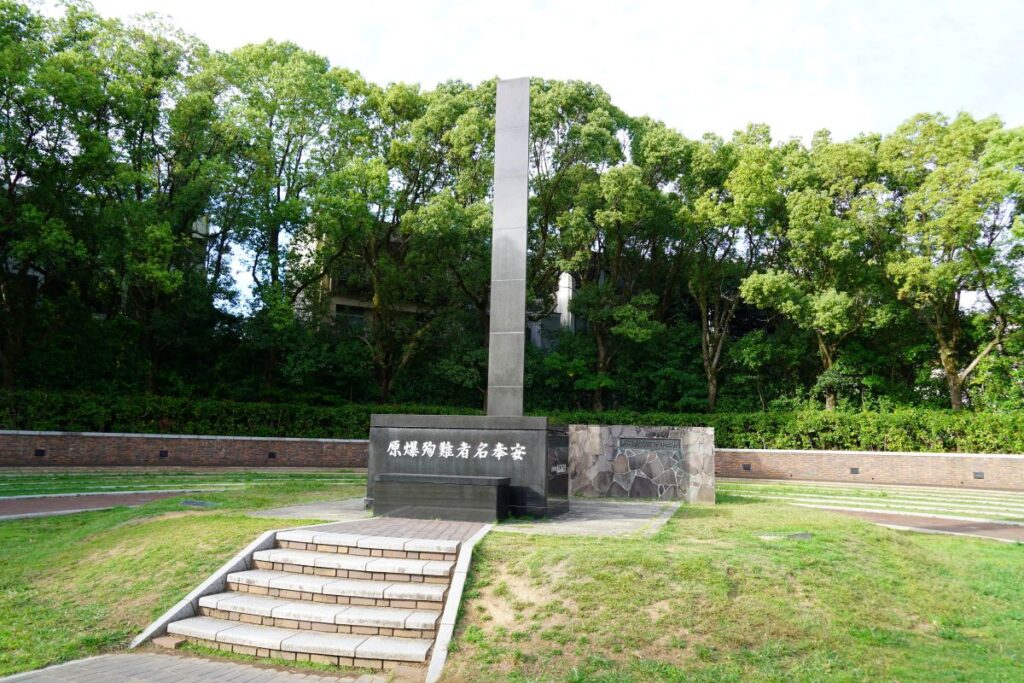
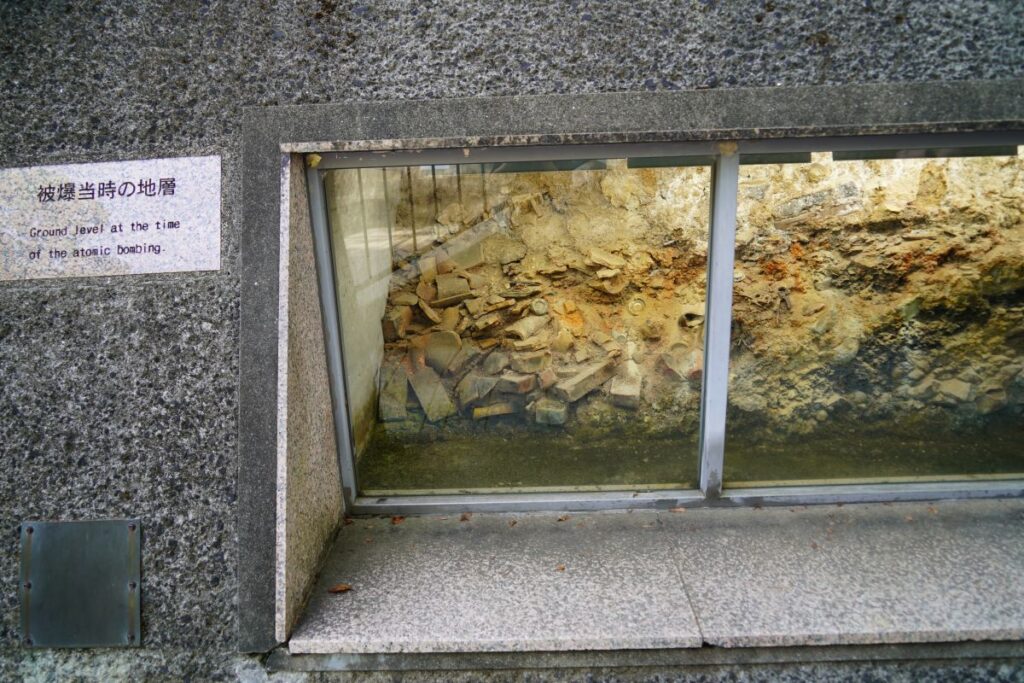
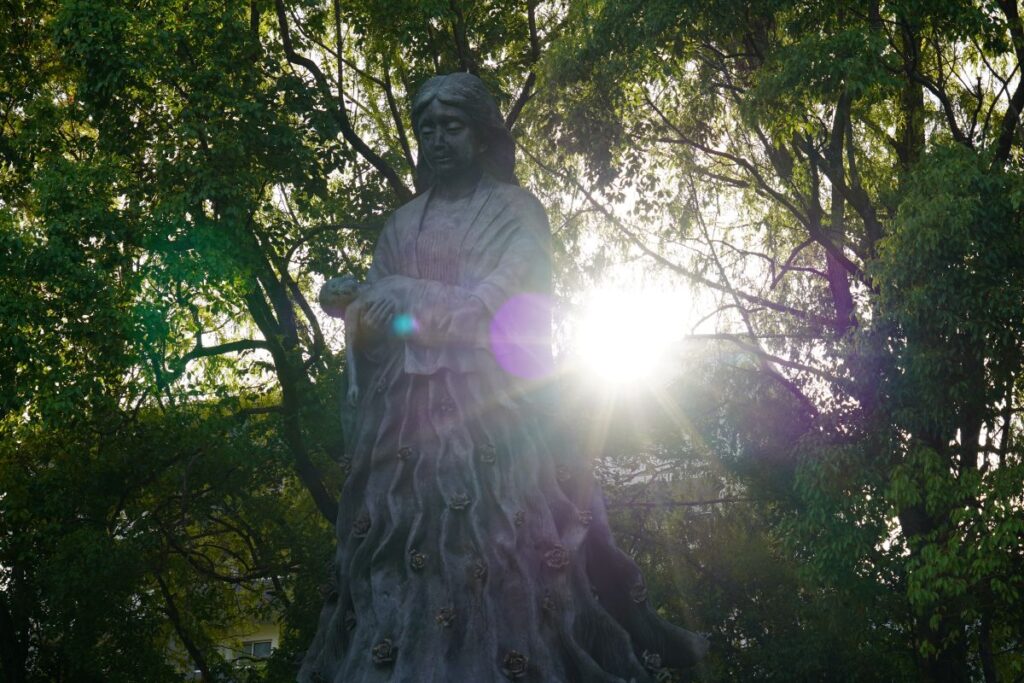
原爆投下後、震源地である松山町は灼熱の地獄と化し、この町を流れる下川は、水を求めて川岸にたどり着いたが、力尽きて亡くなった人々の遺体で埋もれたそうです。
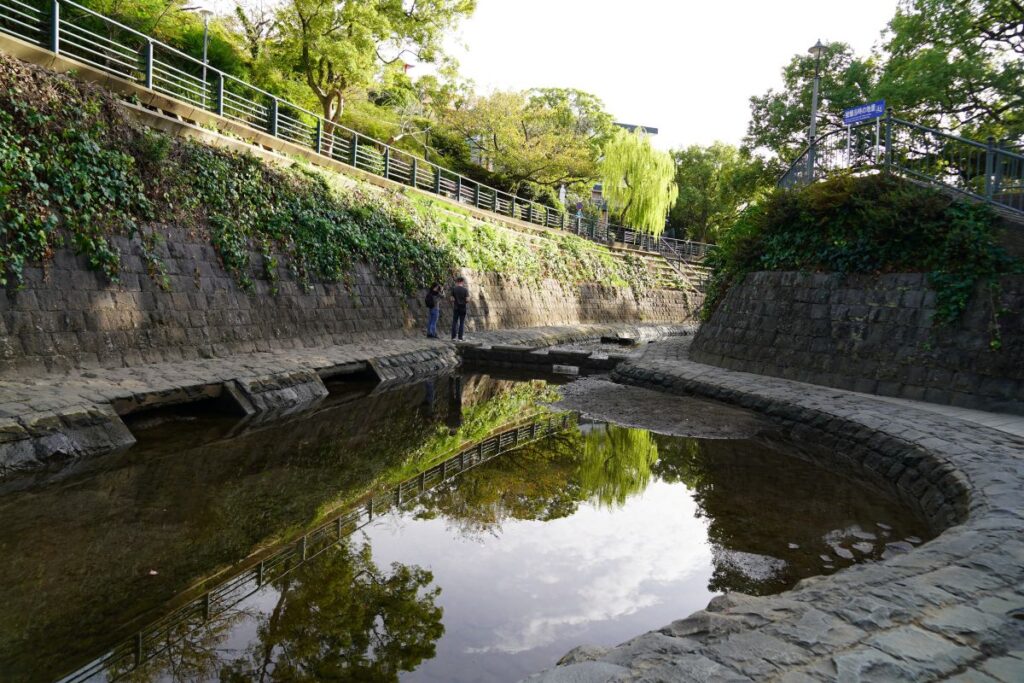
In Zone of Learning
there is Nagasaki Atomic Bomb Musuem. Inside the facility, there are displays of the circumstances of the atomic bombing, the reality of the damage by the atomic bombing such as artifacts burned and scorched, testimonies from survivors, and the development history of atomic bombs. Elementary, middle and high school students 100 yen, other 200 yen. Groups of 15 or more people will get a discount.
Cafe
Blue Bronze Store & cafe is open in 2023 spring near Nagasaki Peace Park. They are selling miscellaneous goods, clothes, baked confectioneries. In the cafe, we can order food and drink such as local green tea, coffee, homemade curry, especially their craft coke is very popular. Frozen cubes of coke are served with ginger, spices, frozen fruits in a glass, we add sparkling water to it when drinking. It is unforgettable tasty drink.
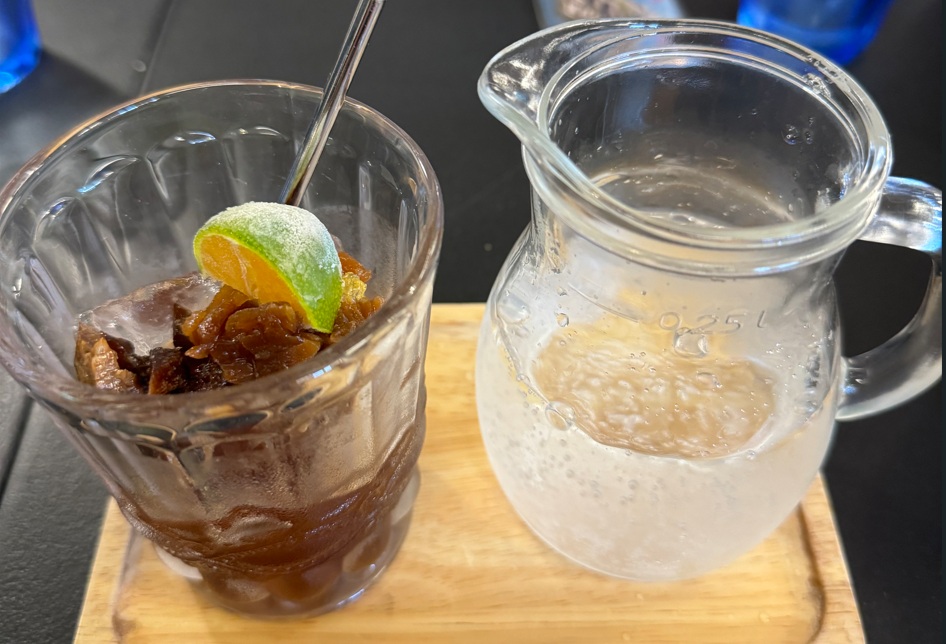
Site of the Tang people’s residence
In Edo period, the Chinese residence area (Site of the Tang people’s residence) was established in Nagasaki for Chinese residents as a policy of isolation to prevent smuggling. Chinese residents were strictly restricted from traveling in and out, and only courtesans could freely come and go to that place. However, traditional events could be freely held within the mansion, and banquets were held almost every day.
Many samurai and scholars from across the country visited the Tang people’s residence to learn about Chinese poetry, painting, calligraphy, and other arts. In fact, more people visited the Tang people’s residence than Dejima. Also, trade with China exceeded Dutch trade in both volume and profit.
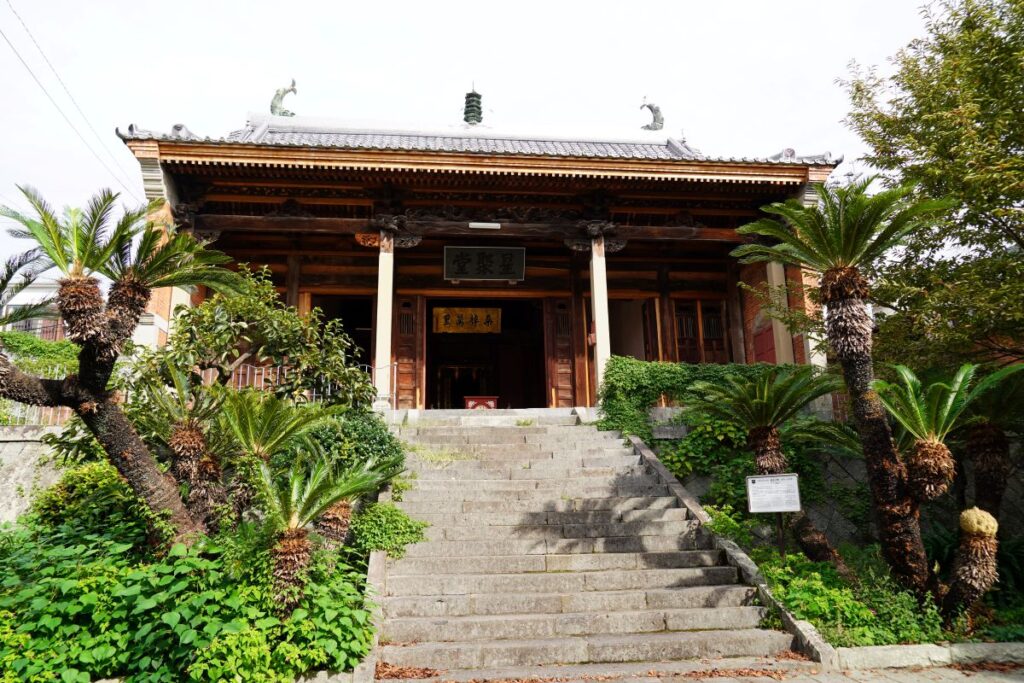
Fujian Hall ( left ) and Tin Hau temple (right) were built to worship the Holy Mother. The current building was constructed in 1906 (the 39th year of the Meiji era) with donations from overseas Chinese.
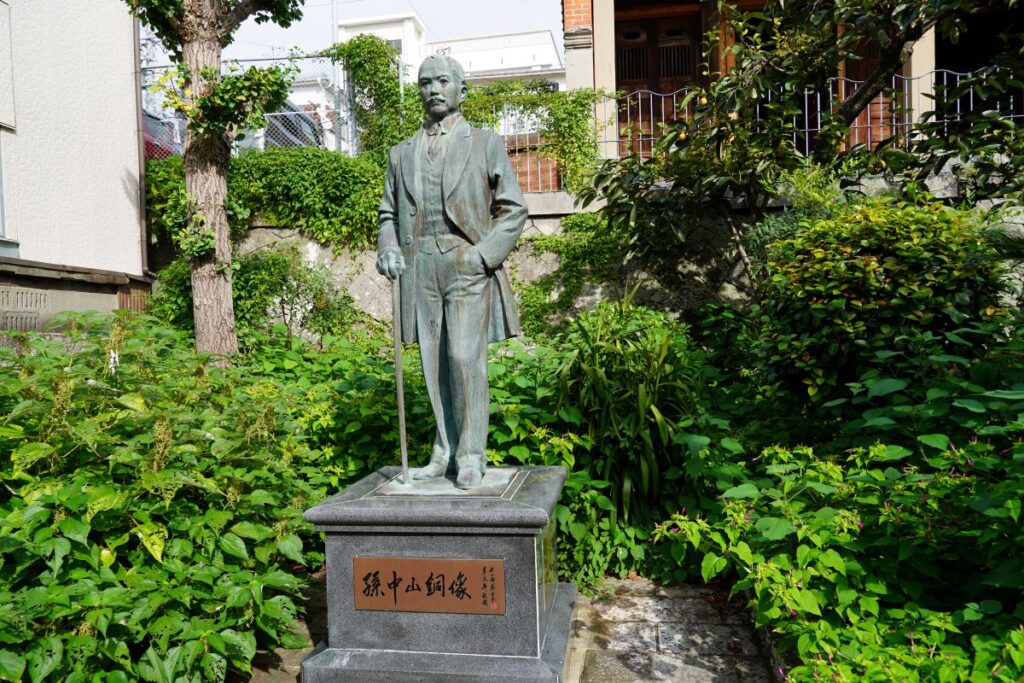
Sun Yat-sen, known as the father of the Chinese revolution, visited Nagasaki nine times, and this statue of Sun Yat-sen was donated to Nagasaki Prefecture from Shanghai in 2001 as a symbol of Japan-China friendship.
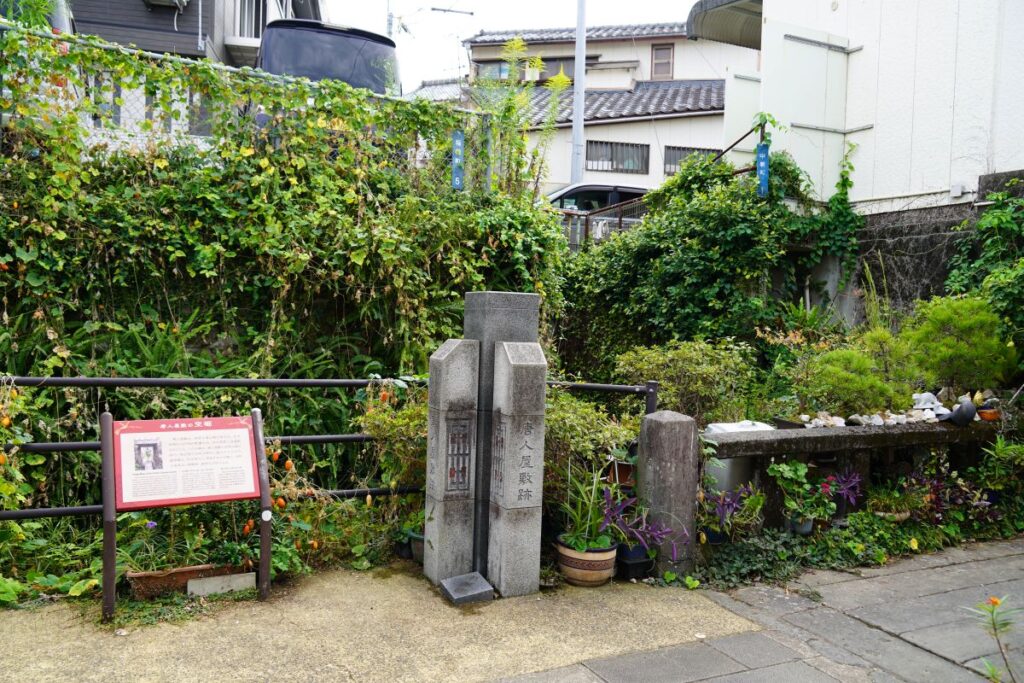
The Chinese residence was surrounded by a moat and walls, with bamboo fences arranged on the outside, isolating it from the outside world.
China town ( Nagasaki Shinchi Chuka Gai ) is close to Site of the Tang people’s residence. As a specialty in the China town in Nagasaki, “Nagasaki Champon” should be listed. Stir-fry pork, vegetables such as green onions, fish products like fish cakes, and a dozen kinds of ingredients in lard, then add specialized noodles to a broth made from pork bones and chicken carcasses and bring to a boil. We had nice Nagasaki Champon at Shokuenbou open since 2023.
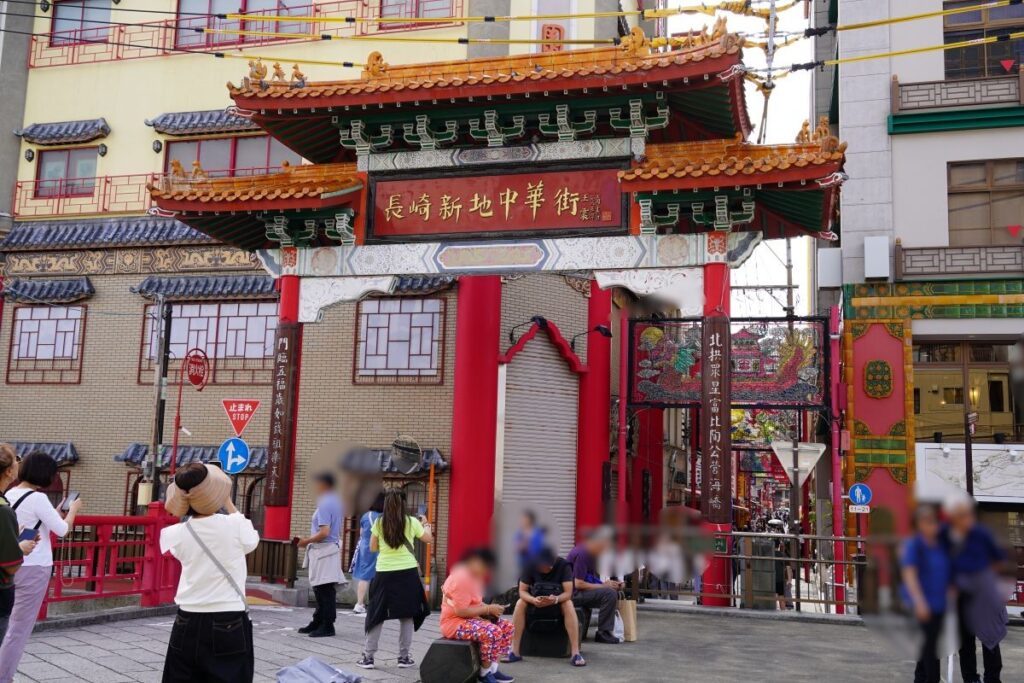
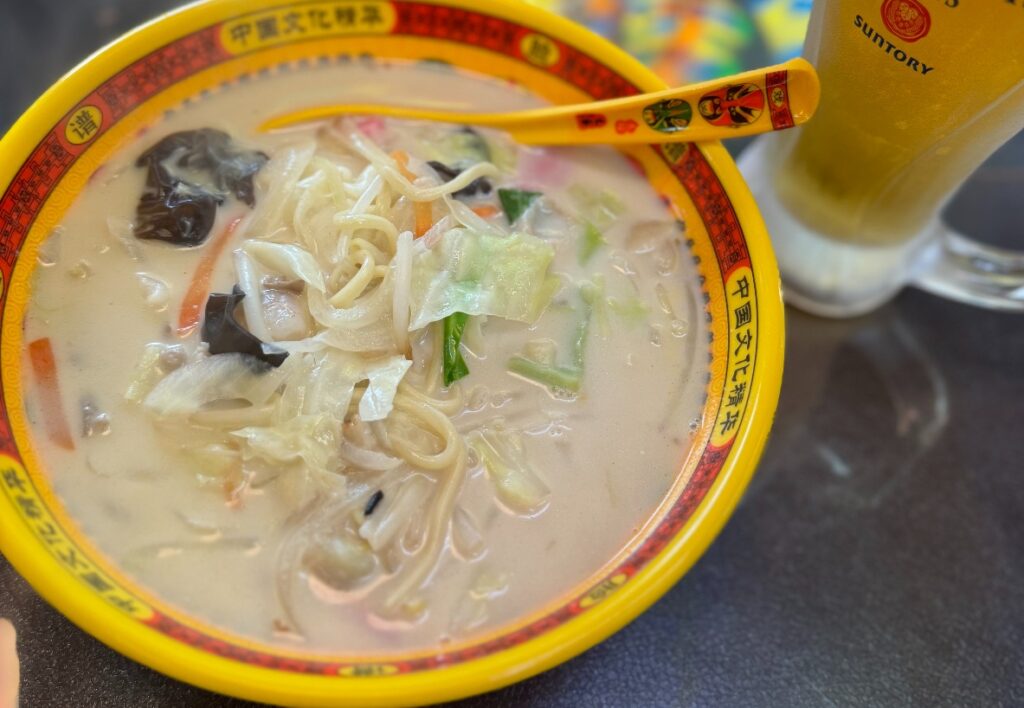
Dejima
Dejima was a tiny island in the shape of fan built in 1636 to have Westerners (firstly Portuguese, later Dutchess) live and prevent the propagation of Christianity. Edo Shogunate built walls, a bridge, let wealthy merchants in Nagasaki build houses and warehouses for rent. Dejima was the only place in Japan where Westerners could visit for trading for 200 years until Edo Shogunate ended.
The perimeter of the fan-shaped island was reclaimed due to port construction and other works after the country opened up, and by 1904 it became completely connected to the mainland, causing the fan shape to disappear.
Currently, 19 houses and warehouses are restored by Dejima Restoration Project. It is open 8:00 – 21:00 ( last entry 20:40 ), adult 520 yen, high school students 200 yen, others 100 yen. Group more than 15 people can get a discount. Accessible by bus ( No.17 or 27 and get off at Dejima bus stop ), tram( To Sohukuji and get off at Dejima ) from JR Nagasaki station. Also, it takes 20 minutes on foot from JR Nagasaki station.

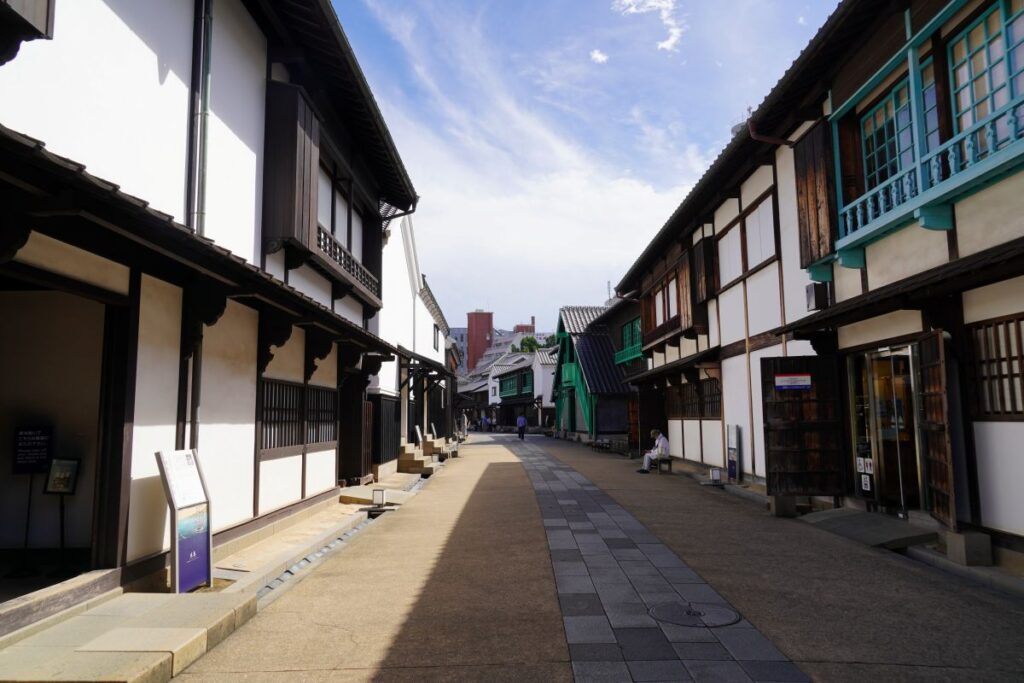
When you visit here, you can feel as if you have time-traveled back to the Edo period.
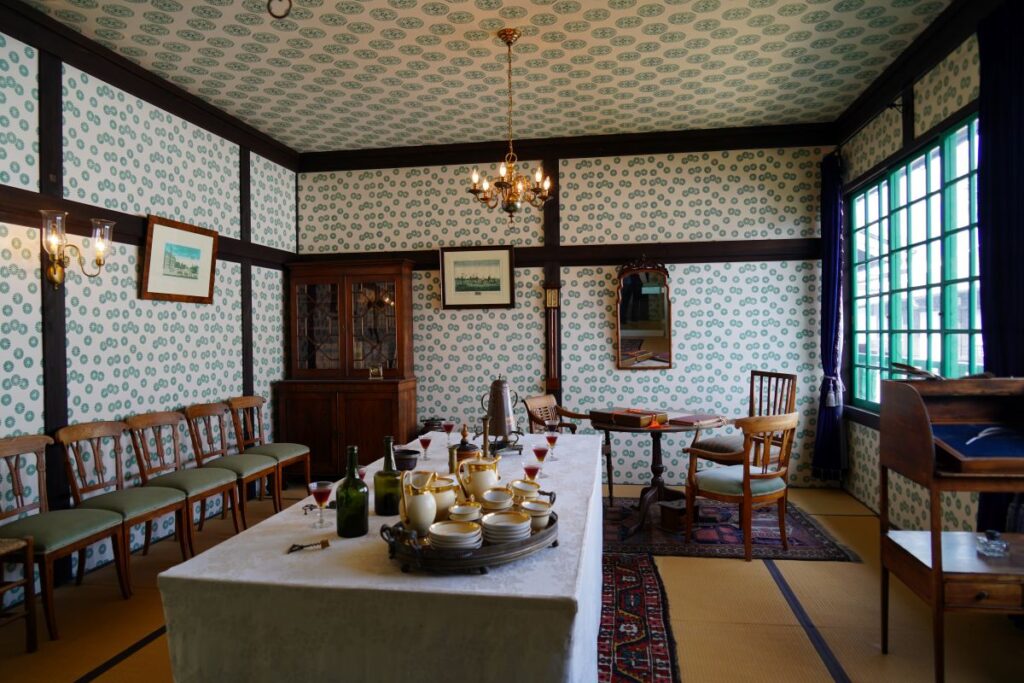
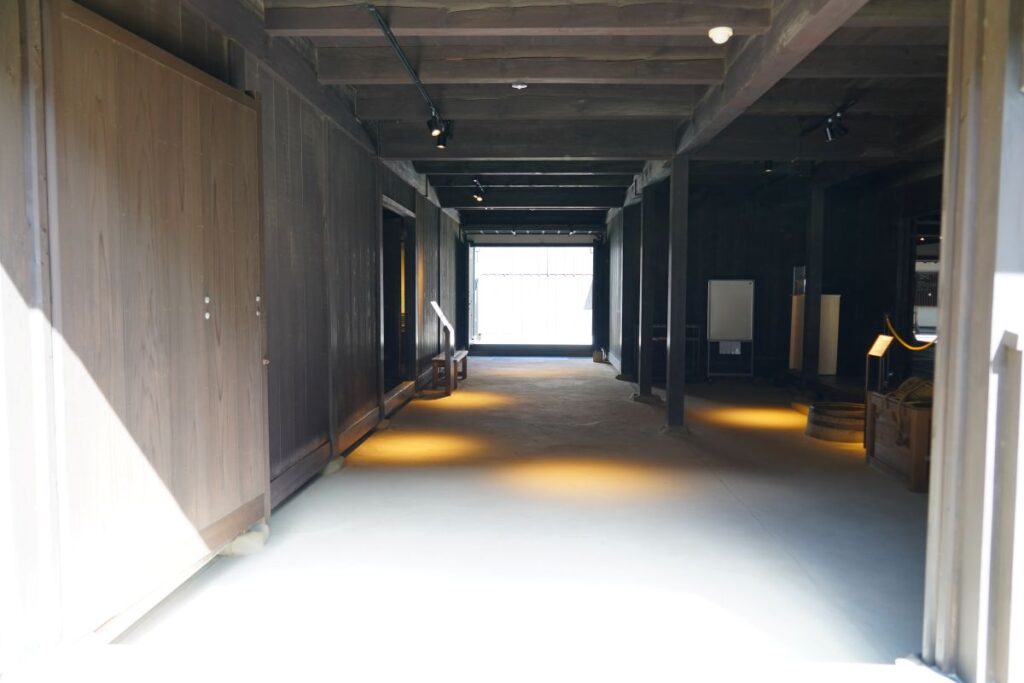

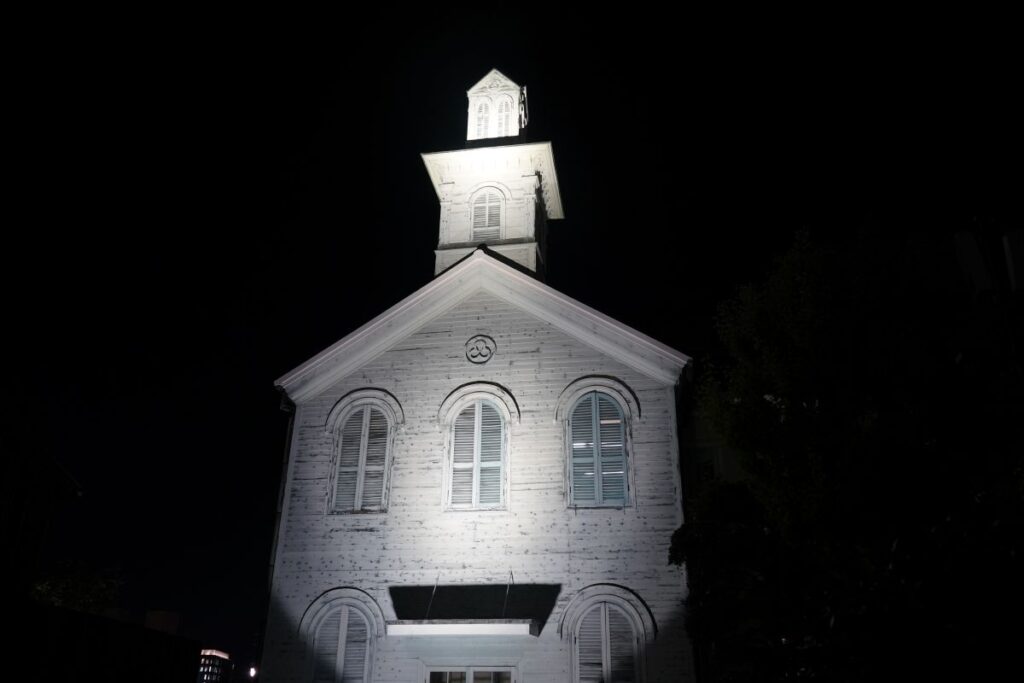
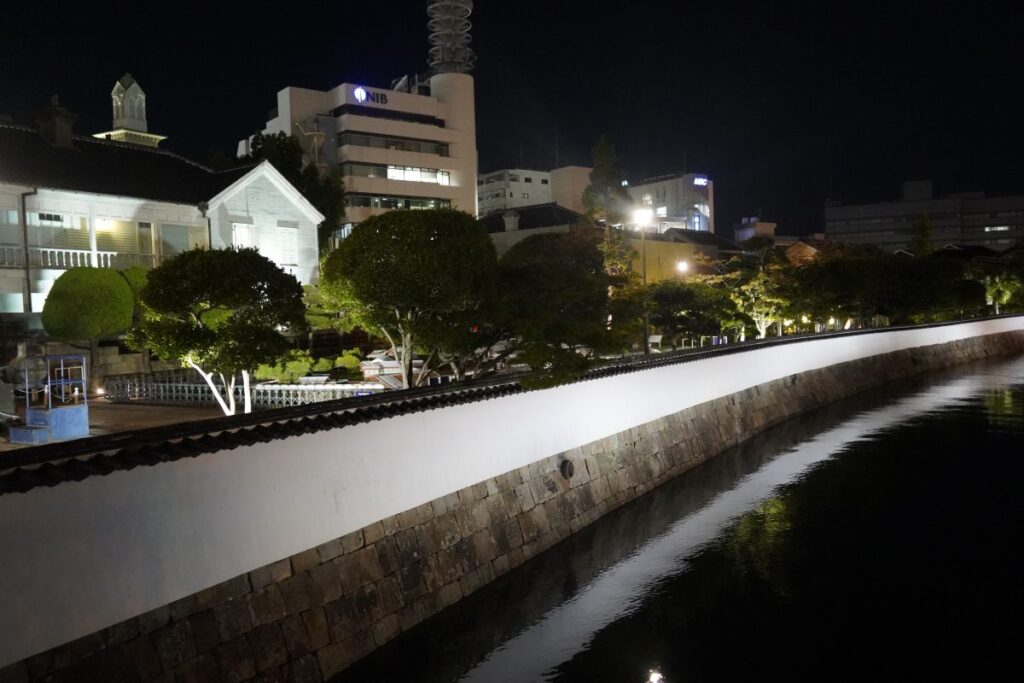
Glover Garden
Thomas Blake Glover (1838-1911) is Scottish, established Glover and Co. (Glover Shokai) in 1859 in Nagasaki after the Edo Shogunate concluded Japan-U.S. Friendship Treaty with the USA and decided to open the country in 1853. He was active as a weapons dealer and built a Western-style dock in Nagasaki to start the shipbuilding industry. In Meiji period, he managed the coal mine in Takashima. He influenced Japan a lot for the modernization. Also, he established Japan Brewery Company with Wilson Walker who is English, old brother of Robert Neill Walker ( Walker and Co. – produced first Japanese soft drink ). It is first beer brewery in Japan, the predecessor of Kirin Brewery Company, Limited. His residence was built on a scenic place on the hilltop in Nagasaki city.
Walker brothers, William Alt ( Alt and Co. – Japanese tea trading ), Frederic Ringer ( English, Home Ringer and Co. – hotel business, trading, Japanese tea production ), Thomas Albert Glober/Tomisaburo Kuraba ( son of Thomas Blake Glover, installed steam troll fishing in Japan, published fish atlas ) also lived in the residential area.
Now it is open for public as Glover Garden. Adults 620 yen, High school students 310 yen, Elementary and junior high school students 180 yen. Open everyday, Opening hours 8:00 – 18:00 / 20:00 / 21:30 ( closing time is changeable please check here ). Access No.30,40 bus from JR Nagasaki station south exit, get off at Glover Garden( approx. 20 minutes ), more options are here.

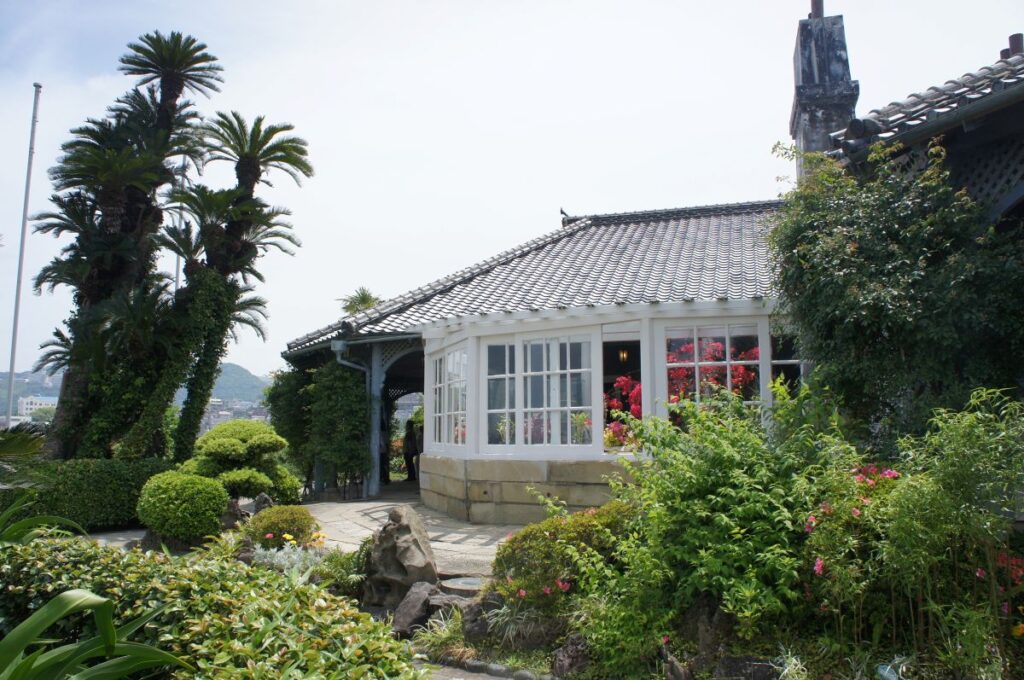
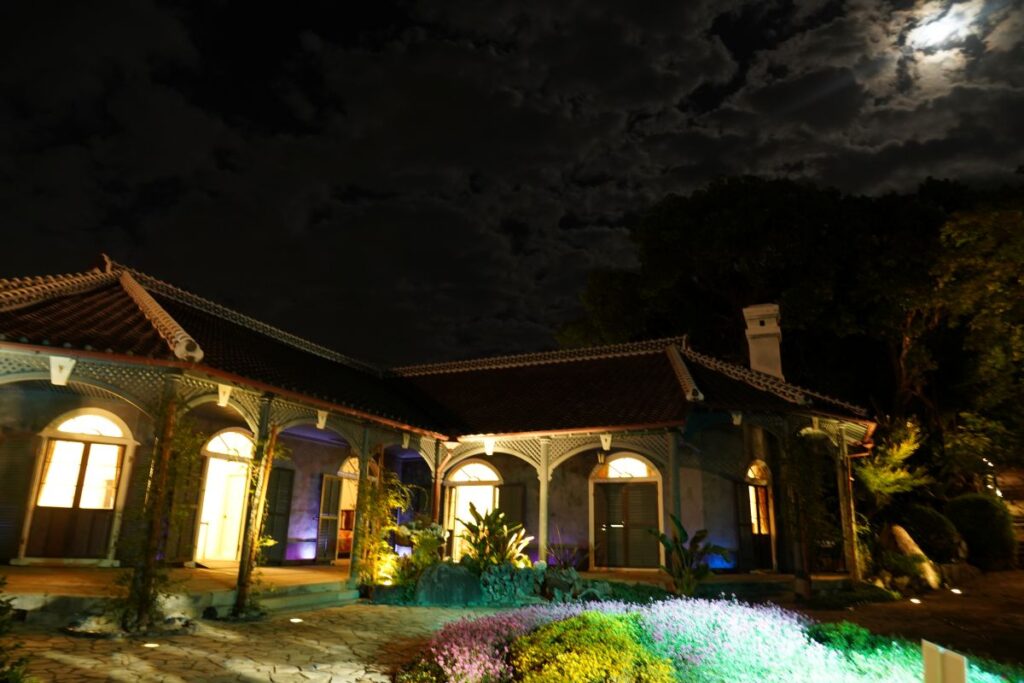
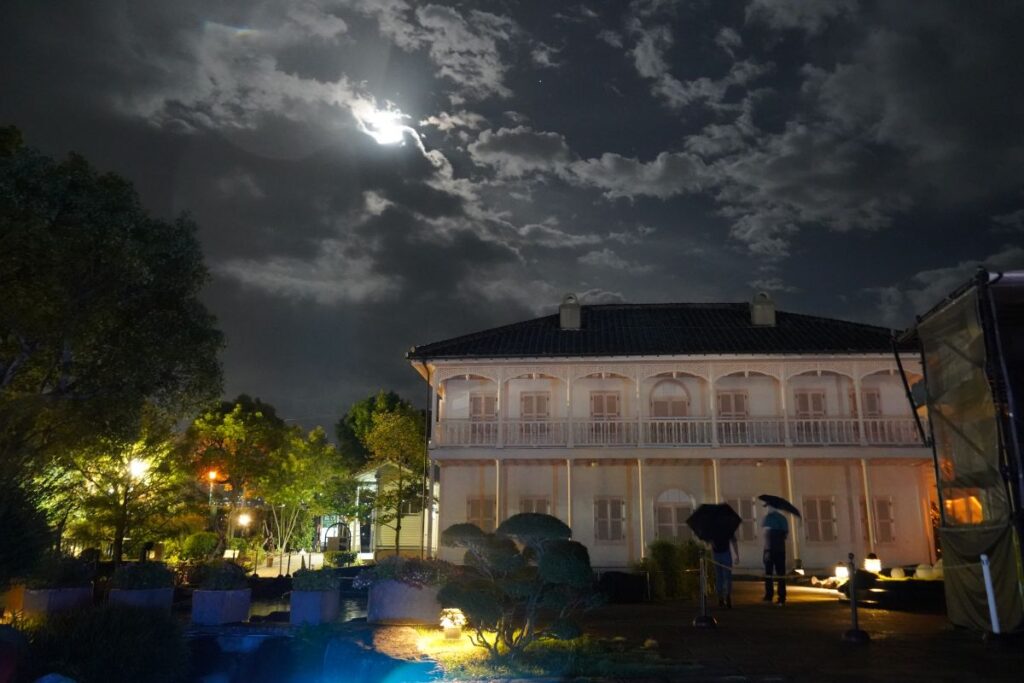
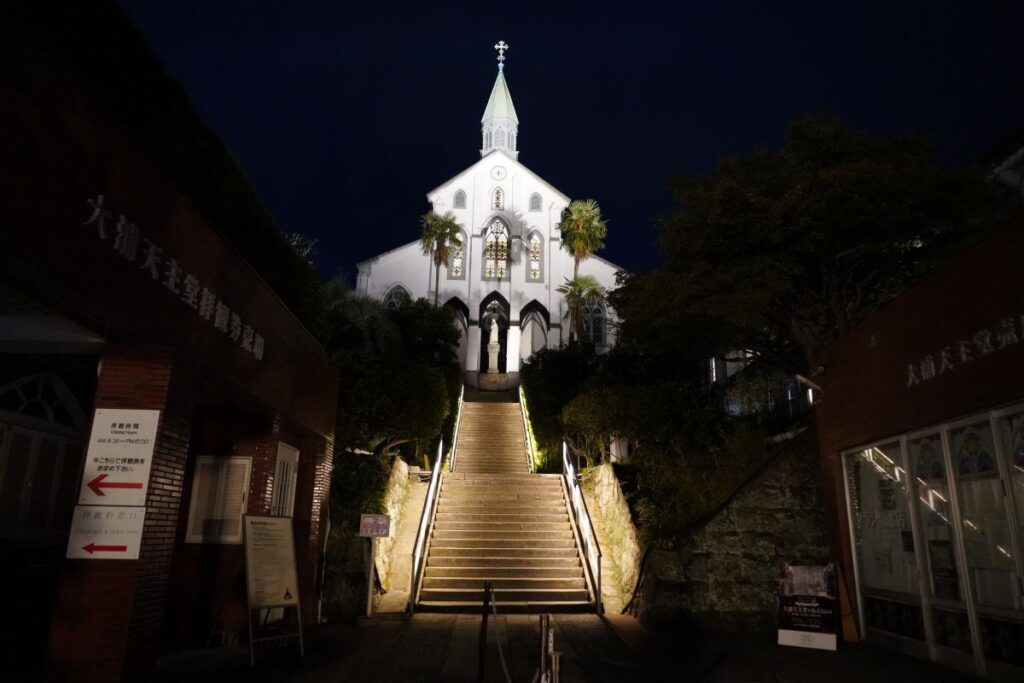
Fukue island ( a part of Goto islands )
Fukue island is a part of Goto islands in Nagasaki prefecture. Goto means five islands of Nakatsu island, Wakamatsu island, Naru island, Hisaka island and Fukue island. Hisaka island, Naru island and Fukue island are Goto city. In Goto islands, there are 152 islands including small uninhabited island, Catholic Churches have been registered to the World Heritage Site as Hidden Christian Sites in the Nagasaki Region. (Christianity has often been prohibited in the history of Japan.) Also, almost the entire area is designated as a national park for complex and diverse terrain such as volcanic landscapes.

To Fukue island, it takes approx. 1.5 hour by jetfoil (Kyushu Shosen : Adult 9,030 yen, Child 4,080 yen as of 2025 ) from Nagasaki port. Airplane from Nagasaki airport to Goto Tsubaki airport in Fukue island is also available. In Fukue island, hiring a car or taxi are recommended. We took the jetfoil to Fukue island and hired a car (Goto-ya rental car)to go around. Goto-ya rental car has the pick-up service.
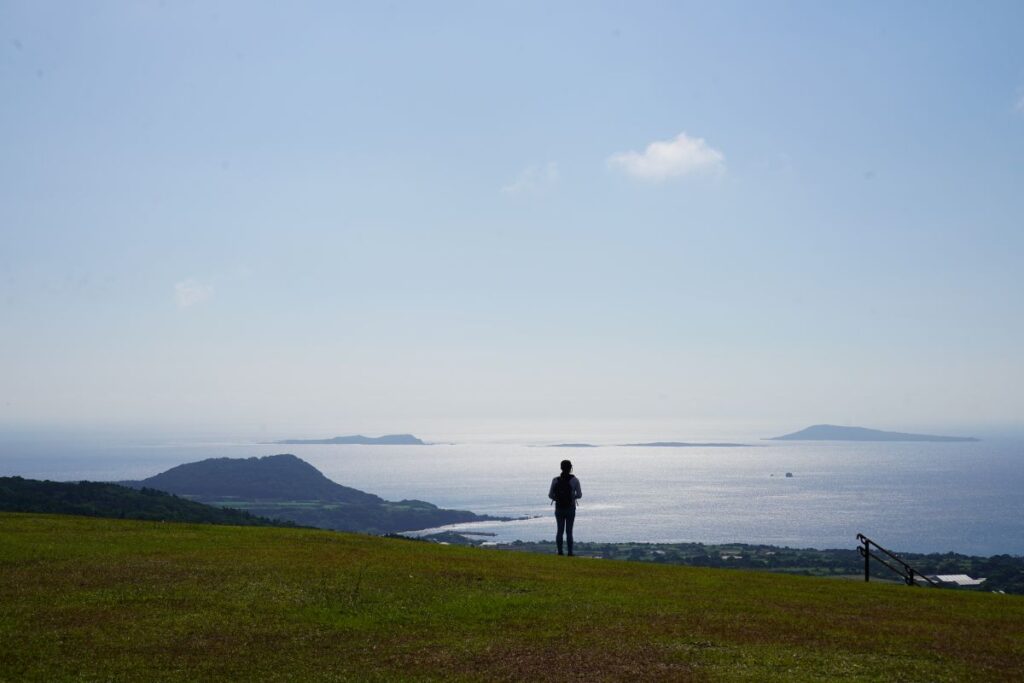
Mt.Oni nature garden ( Oni-dake enchi ) is located 6km away from Fukue port, takes approx. 12 minutes by car. There is no tree, but only short grasses and plants. It is a part of the Kyusyu Nature Trail 3,000km footpath.

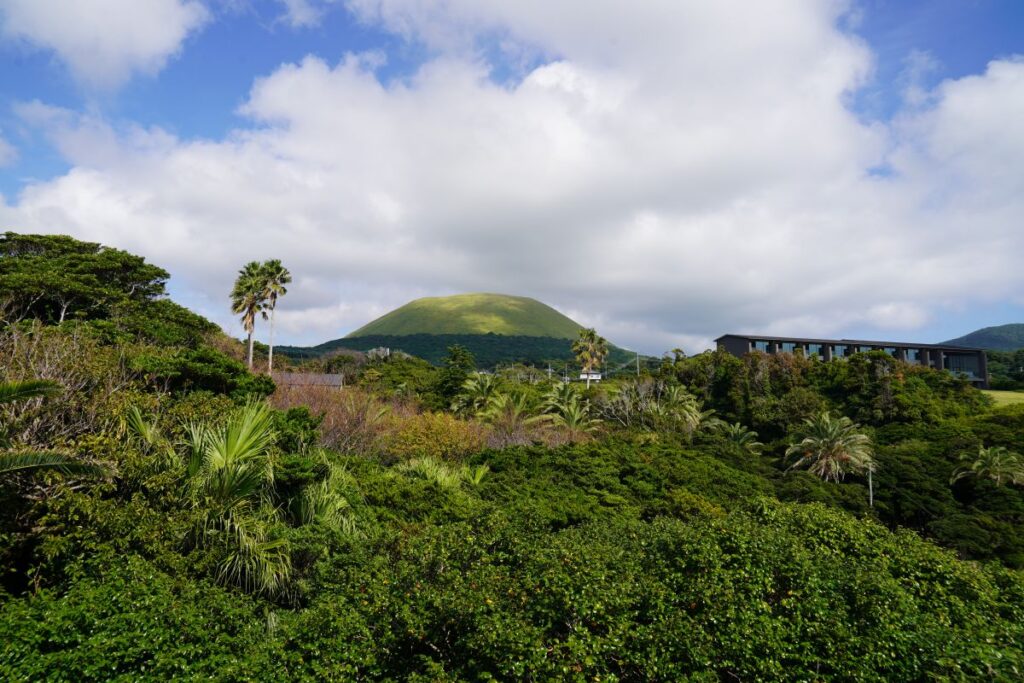
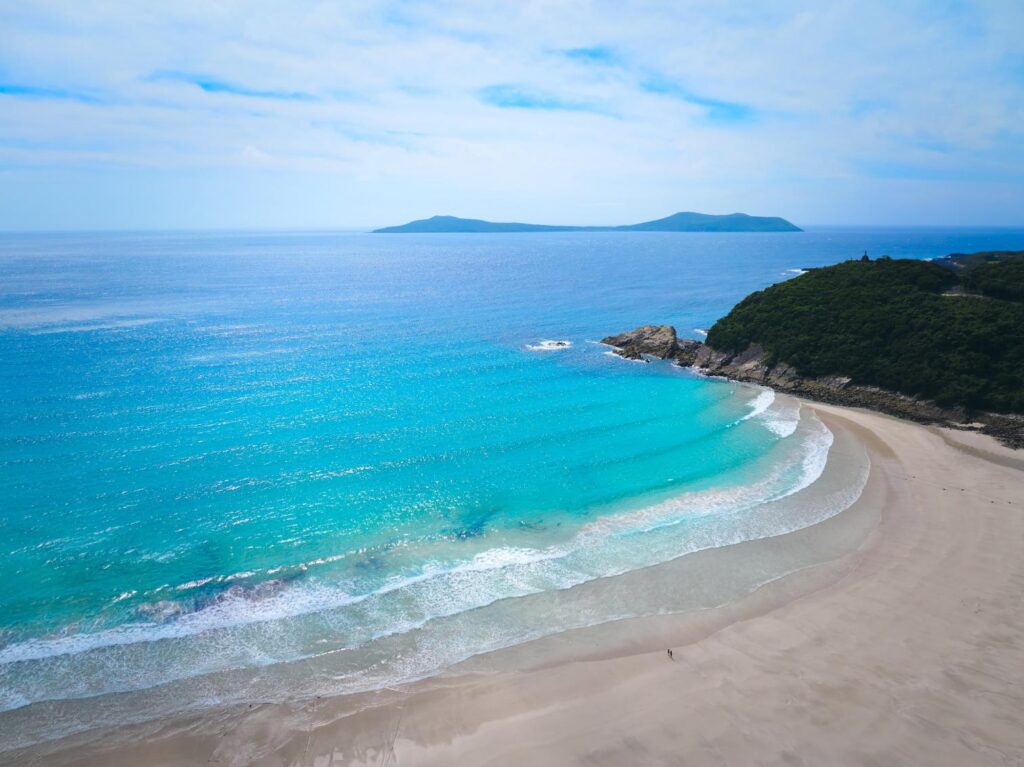
Takahama beach in Fukue island can be considered as the most beautiful beach in Japan with vivid emerald green color. 27km away from Fukue Port, takes approx. 35 minutes by car.
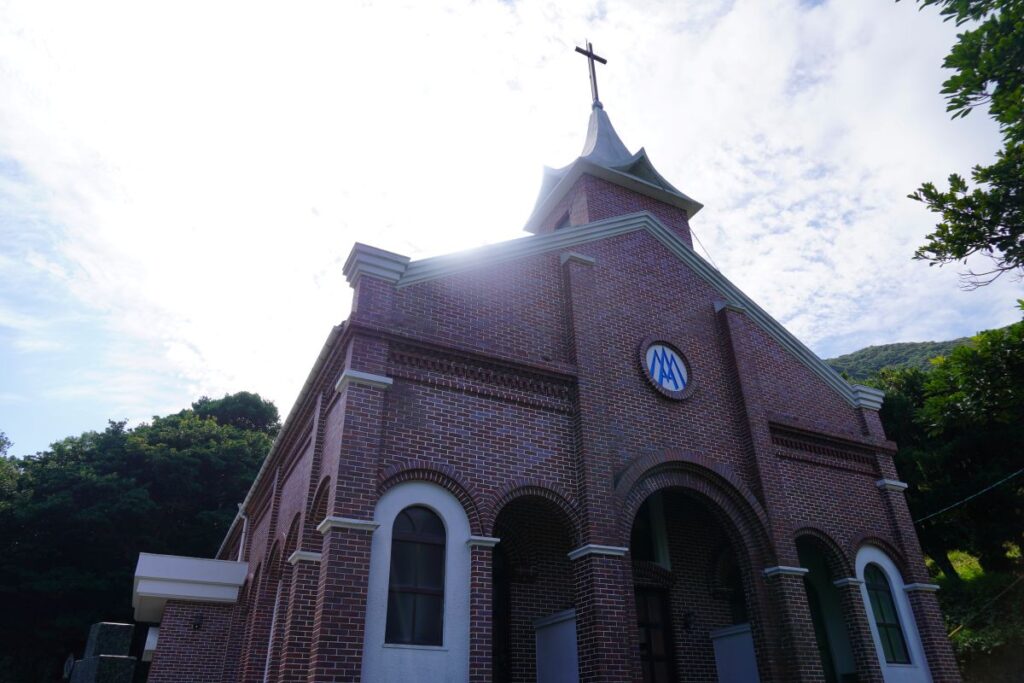
The Imochiura Church’s history of faith began with the hidden Christians who moved to Goto in the late Edo period, and this area is the only area in Goto that escaped persecution. The first brick church was built in 1897. Later, the church was destroyed by a typhoon, current concrete church was built in 1988. 32km away from Fukue Port, takes approx. 45 minutes by car.
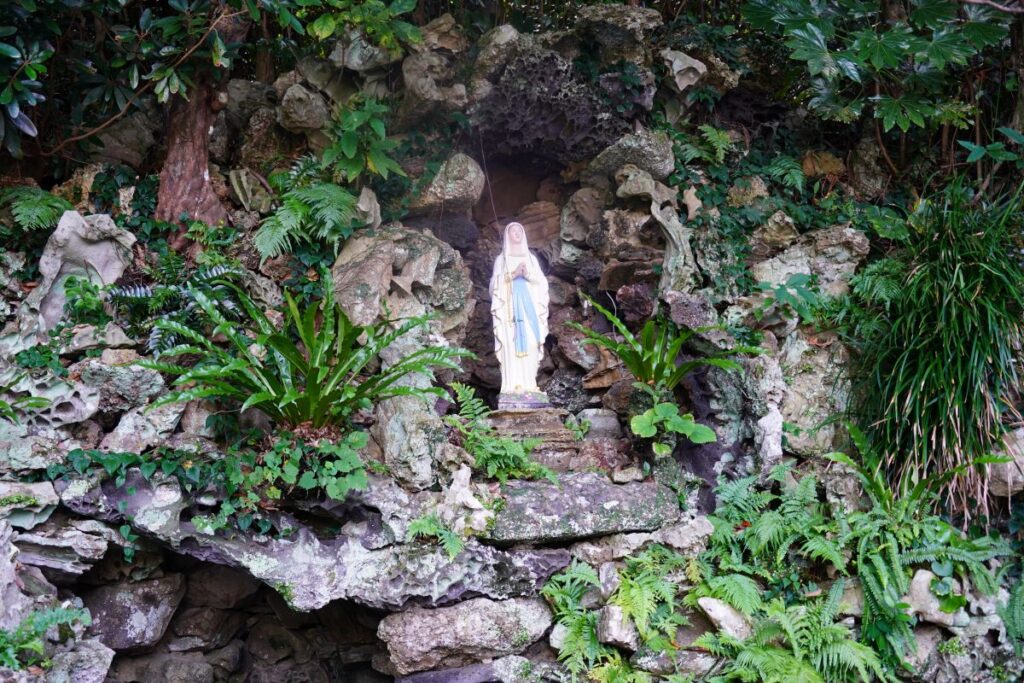
In 1899, Father Peru, the Bishop of the Goto Islands and Christians in Goto islands collected strange rocks in the island and built first Lourde in Japan. Although the water in the Lourde is currently dried up, it is said that drinking this sacred water cures illnesses, making it a pilgrimage site for believers from all over Japan. ( sacred water is being provided in a separate building )
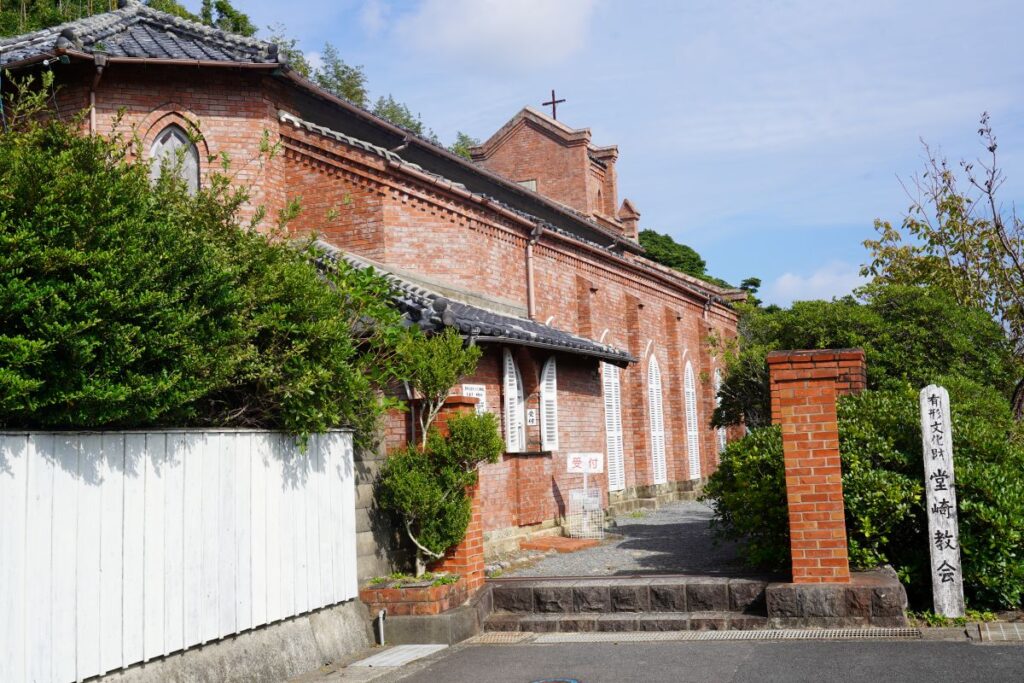
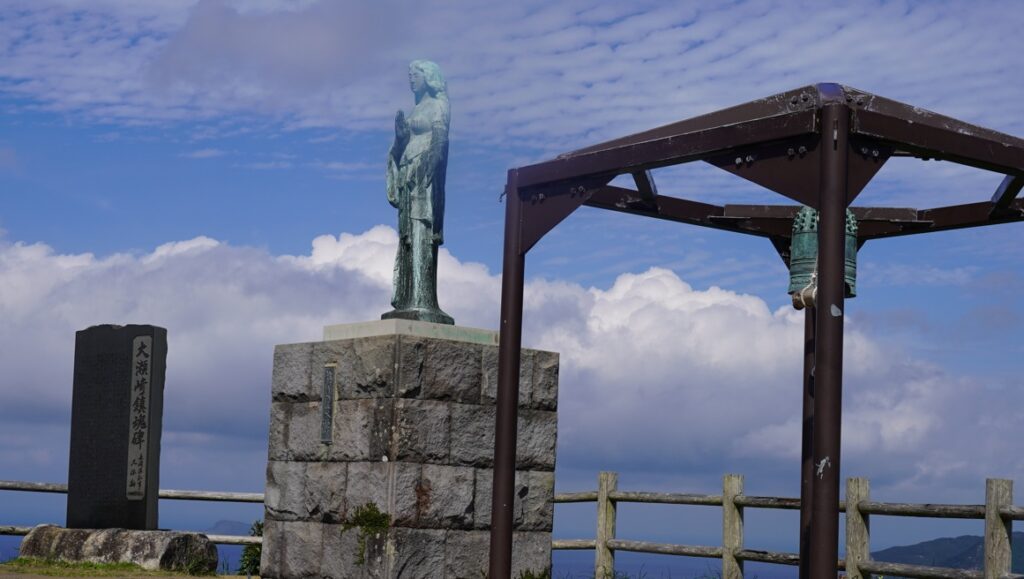
In Osezaki, near by the observation deck of Osezaki Lighthouse, there are Mayden of Prayer statue and Bell of Prayer. These were established to comfort the spirits of many soldiers who, during the Pacific War, departed from the shore of Osezaki where was their last view in Japan and could not come back again. Mayden of Prayer was created by Seibo Kitamura who also created Peace Statue in Nagasaki Peace Park.

Osezaki lighthouse is the place where the sunset occurs the latest on the Kyushu mainland. This photo was taken from the observation deck. There is a footpath we can walk to the lighthouse. It takes approx.1 hour for a return.
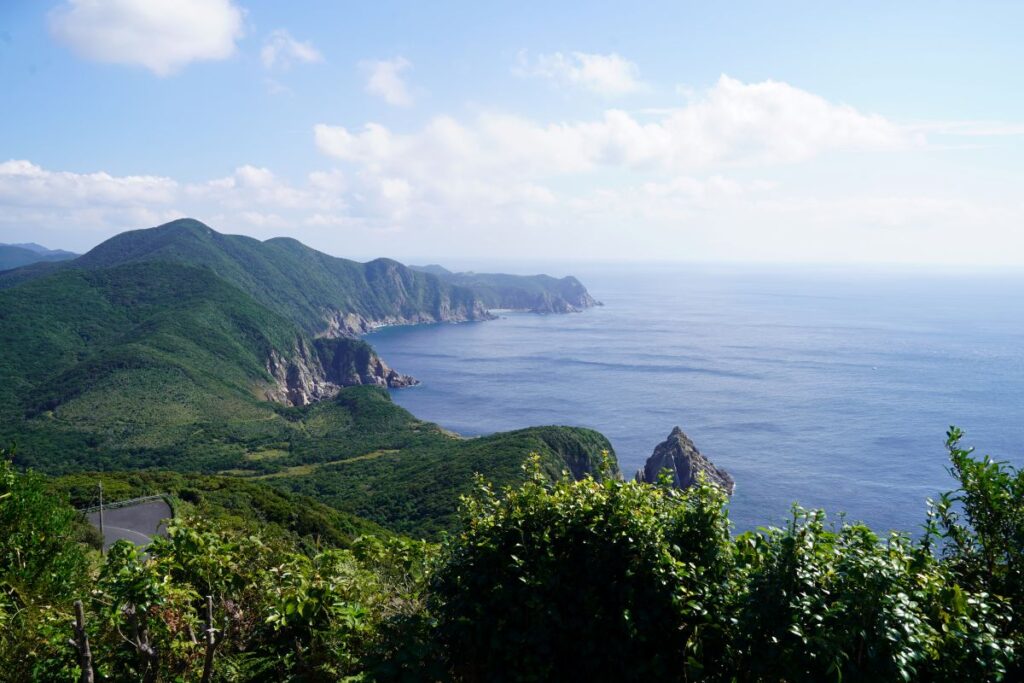
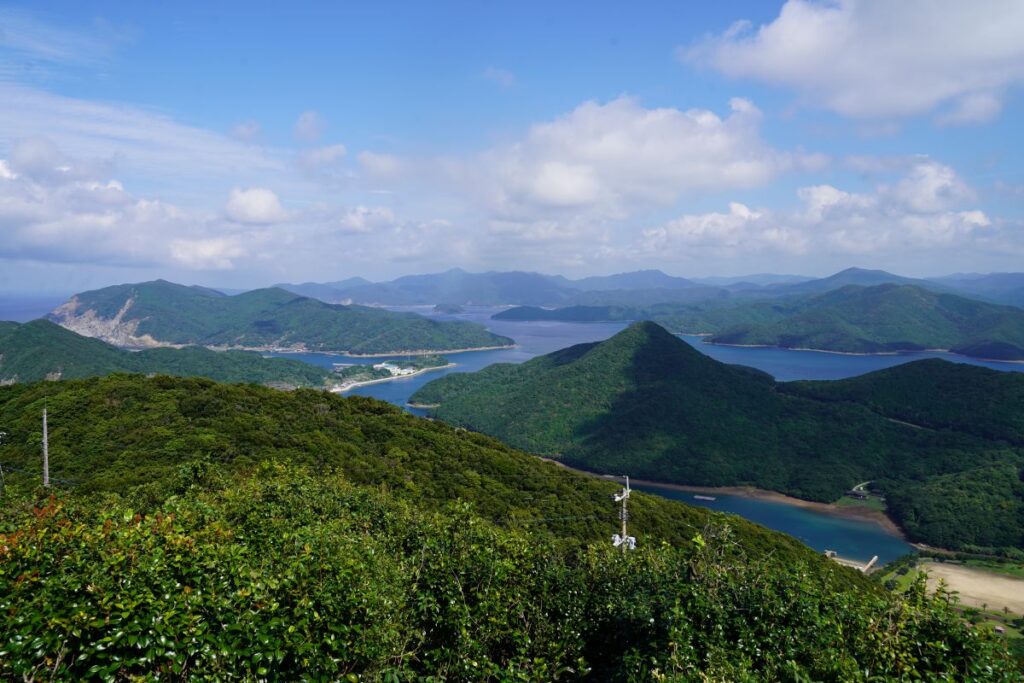
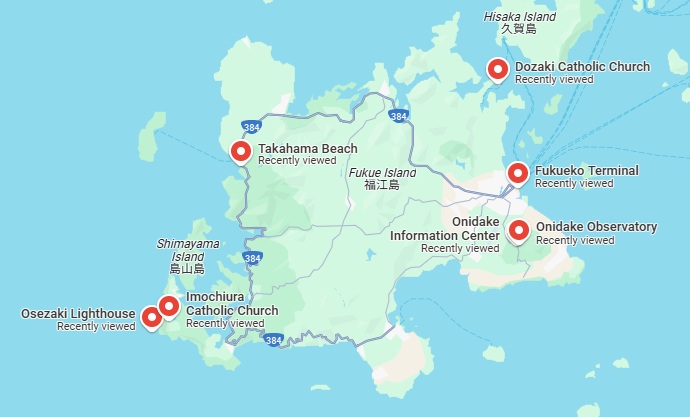
Nagasaki city night view and Megane Bridge
The following bridge is called The Megane Bashi( Eyeglass Bridge ), the part of the bridge’s arch reflected on the river surface looks like a pair of glasses. It is located near Dejima. The Megane Bridge is the first arch-type bridge in Japan, built in 1634 by the Zen master Mokushi Jojo from Kofuku-ji Temple.
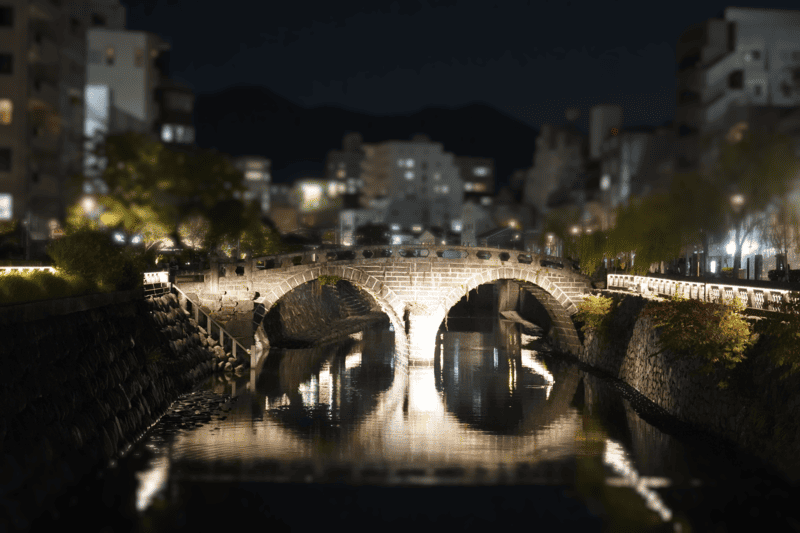
The night view from Inasa Mountain is one of Japan’s three great night views. We can go to the top of Inasa Mountain from Fuchi shrine station by Nagasaki Ropeway. Round trip – adult 1250 yen, children 940 yen, infant 620 yen ( as of 2025 June )
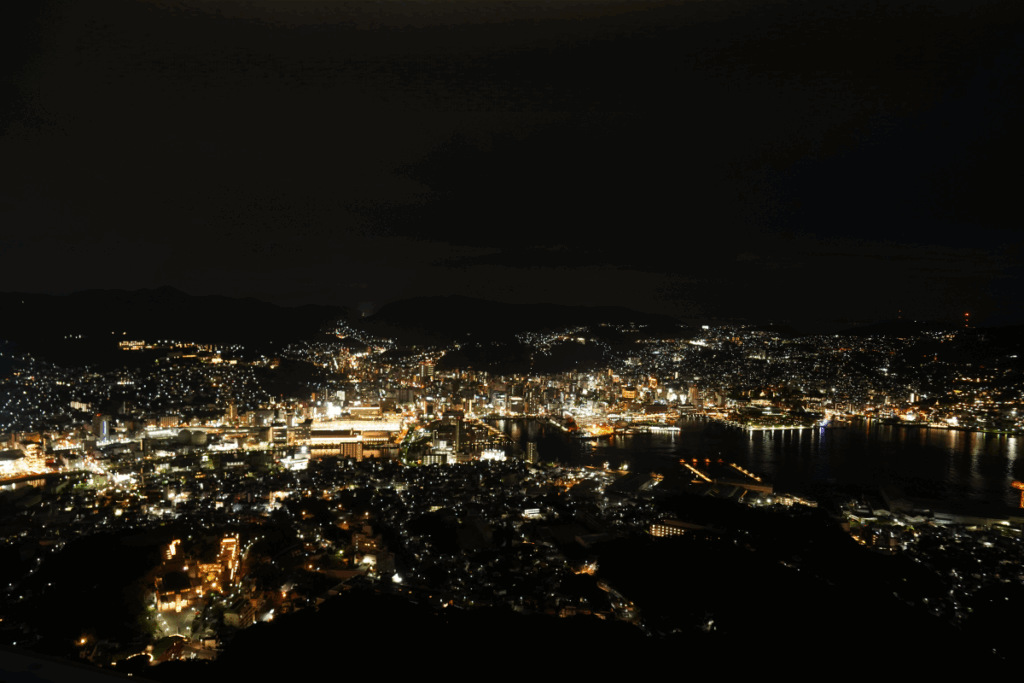
Nagasaki Specialty
Shochu
Shochu is distilled spirit made from grains such as potato, mainly produced in the Kyusyu region. Especially in Nagasaki, Iki Shochu produced in Iki island is made from barley, known as Mugi (barley) Shochu. Generally, alcohol content is 25%, some times 35-40%. There are several ways to drink shochu: straight, on the rocks, with water, or with hot water, Mugi Shochu has the unique roasted flavor of barley is characteristic. The photo below shows Ching produced by Omoya Shuzo in Iki Island, Goto-nada Beni Satsuma produced by Goto-nada Shuzo, this is made from potato in Nakatsu Island where is a part of Goto Islands.
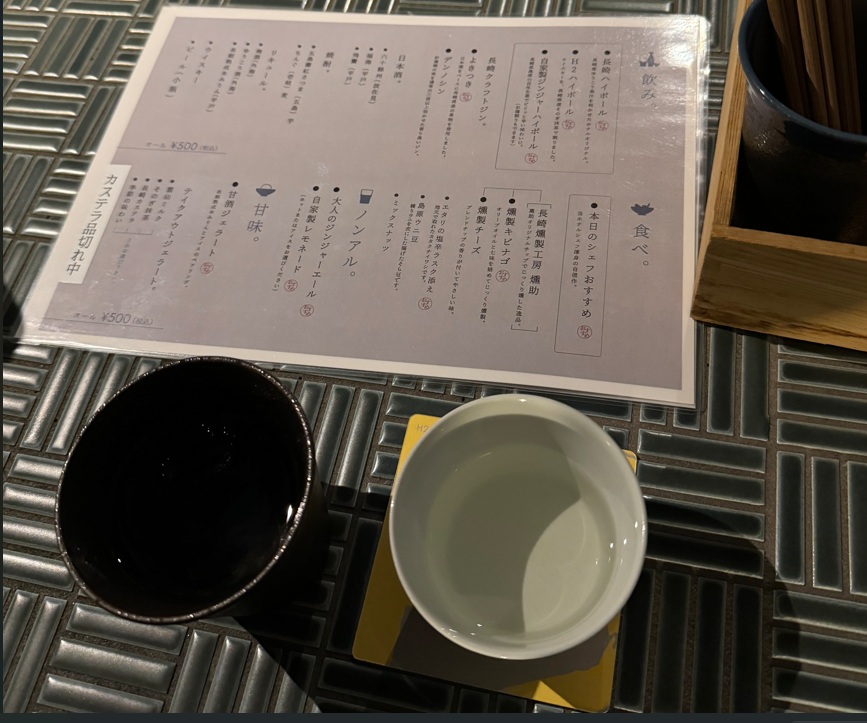
Sake
Even though shouchu is a major alcohol product, sake brewing is also thriving in Nagasaki. Omoya Shuzo in Iki Island is brewing a very popular sake ‘Yokoyama’ further to shochu (above Chingu).
Goto Udon

